April 30, 2023
Prelims Pointers
April 30, 2023
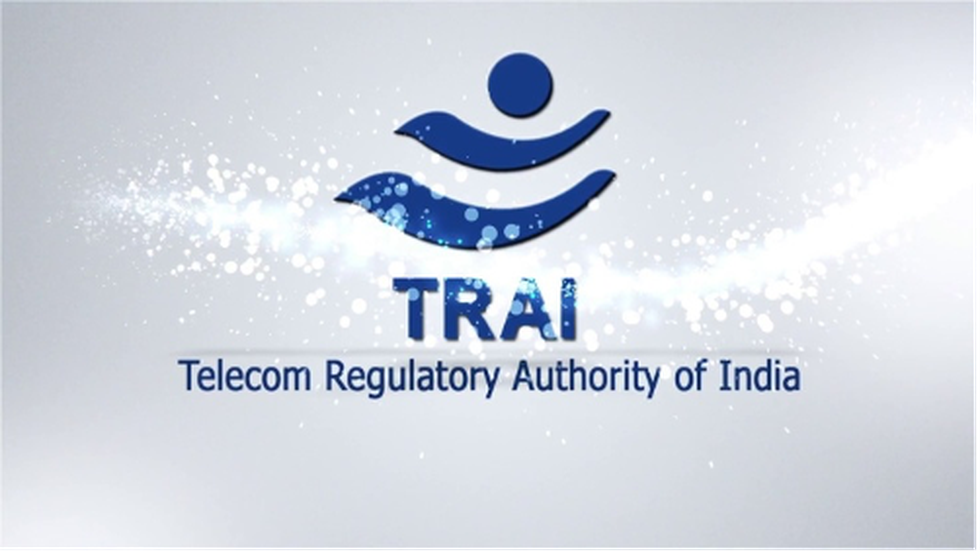
About Telecom Regulatory Authority of India (TRAI):
- It is a regulatory body set up by the Government of India under section 3 of the Telecom Regulatory Authority of India Act, 1997.
- It is the regulator of the telecommunications sectorin India.
- Composition:
- It consists of a Chairperson and not more than two full-time members, and not more than two part-time members.
- The chairperson and the members of TRAI are appointed by the Central Government, and the duration for which they can hold their office is three years or until they attain the age of 65 years, whichever is earlier.
- Government Control over TRAI:
- TRAI is not a completely independent telecom regulator.
- Under section 25 of the Act, it has the power to issue directions which are binding on TRAI.
- The TRAI is also funded by the Central Government.
- Functions:
- Making recommendations on various issues;
- General administrative and regulatory functions;
- Fixing tariffs and rates for telecom services; and
- Any other functions entrusted by the Central Government.
- The recommendations made by the TRAI are not binding on the Central Government.
- Central Government has to mandatorily ask for recommendations from TRAI with respect to the need and timing of new service providers and the terms and conditions of the licence to be granted to the service provider.
- TRAI also has the power to notify in the official gazette the rates at which telecommunication services are being provided in and outside India.
- The TRAI Act was amended in 2000, establishing a Telecom Disputes Settlement and Appellate Tribunal (TDSAT).
Telecom Disputes Settlement and Appellate Tribunal (TDSAT):
- It was set up to adjudicate any dispute between a licensor and a licensee, between two or more service providers, between a service provider and a group of consumers, and to hear and dispose of appeals against any direction, decision or order of TRAI.
- Composition:
- The Tribunal consists of a Chairperson and two Members appointed by the Central Government.
- The Chairperson should be or should have been a Judge of the Supreme Court or the Chief Justice of a High Court.
- A Member should have held the post of Secretary to the Government of India or any equivalent post in the Central Government or the State Government for a period of not less than two years or a person who is well versed in the field of technology, telecommunication, industry, commerce or administration.
Prelims Pointers
April 30, 2023
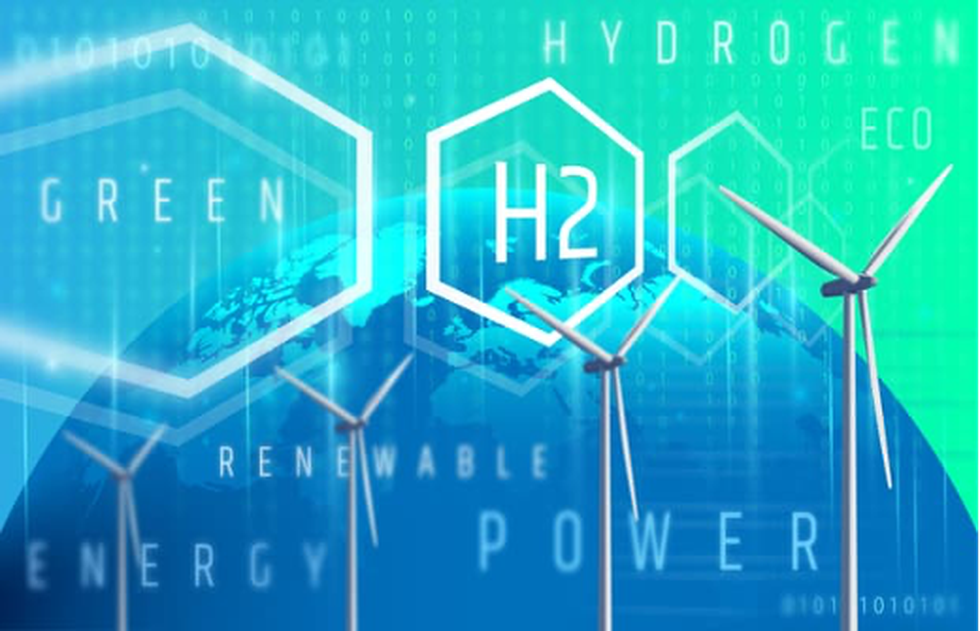
About National Green Hydrogen Mission:
- It was approved by the Union Cabinet on 4 January 2022.
- Aim: To make India a Global Hub for the production, utilization and export of Green Hydrogen and its derivatives.
- The mission outcomes projected by 2030 are:
- Development of green hydrogen production capacity of at least 5 MMT (Million Metric Tonnes) per annum with an associated renewable energy capacity addition of about 125 GW in the country;
- Over Rs. Eight lakh crore in total investments;
- Creation of over Six lakh jobs;
- Cumulative reduction in fossil fuel imports over Rs. One lakh crore;
- Abatement of nearly 50 MMT of annual greenhouse gas emissions;
Types of Hydrogen based on Extraction Methods:
- Grey Hydrogen: It is produced via coal or lignite gasification (black or brown), or via a process called steam methane reformation (SMR) of natural gas or methane (grey). These tend to be mostly carbon-intensive processes.
- Blue Hydrogen: It is produced via natural gas or coal gasification combined with carbon capture storage (CCS) or carbon capture use (CCU) technologies to reduce carbon emissions.
- Green Hydrogen: It is produced using electrolysis of water with electricity generated by renewable energy. The carbon intensity ultimately depends on the carbon neutrality of the source of electricity (i.e., the more renewable energy there is in the electricity fuel mix, the "greener" the hydrogen produced).
Prelims Pointers
April 30, 2023

About Insomnia:
- What is it? It is a common sleep disorder that can make it hard to fall asleep, hard to stay asleep or cause you to wake up too early and not be able to get back to sleep.
- The condition can be short-term (acute) or can last a long time (chronic). It may also come and go.
- Acute insomnia lasts from 1 night to a few weeks. Insomnia is chronic when it happens at least 3 nights a week for 3 months or more.
- It affects women more than men and older people more than younger ones.
- Insomnia may play a role in the development of chronic diseases, such as: obesity, diabetes, cardiovascular disease, depression.
- Types of Insomnia:
- Primary insomnia: This means your sleep problems aren’t linked to any other health condition or problem.
- Secondary insomnia: This means you havetrouble sleeping because of a health condition (like asthma, depression, arthritis, cancer, or heartburn); pain; medication; or substance use (like alcohol).
- Causes:
- Stress-related to big life events, like a job loss or change, the death of a loved one etc.
- Things around you, like noise, light, or temperature
- Changes to your sleep schedule like jet lag, a new shift at work, or bad habits you picked up when you had other sleep problems.
Prelims Pointers
April 30, 2023
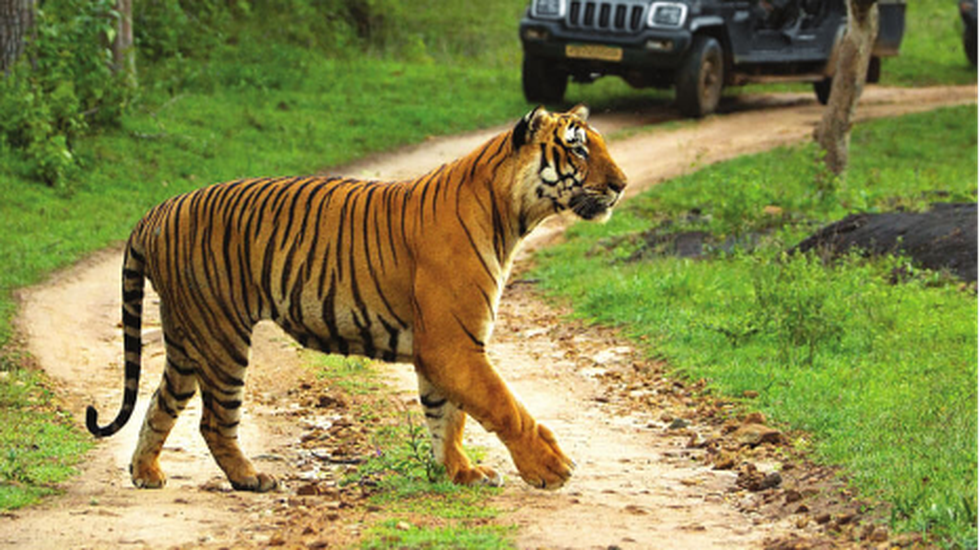
About Achanakmar Tiger Reserve:
- Location: It is located in the Bilaspur district of Chhattisgarh.
- It was declared a tiger reserve in 2009.
- It is a part of the huge Achanakmar-Amarkantak Biosphere Reserve.
- Maniyari River flows right from the centre of this reserve, which is the forest's lifeline.
- It has a corridor connecting to Kanha and Bandhavgarh Tiger reserves and plays a critical role in the dispersal of tigers among these reserves.
- Vegetation: Tropical deciduous forest.
- Flora: Sal, bija, saja, haldu, teak, tinsa, dhawara, lendia, khamar and bamboo bloom here along with over 600 species of medicinal plants.
- Fauna: Wild fauna includes the tiger, leopard, bison, flying squirrel, Indian giant squirrel, chinkara, wild dog, hyena, sambar, chital and over 150 species of birds.
Prelims Pointers
April 30, 2023
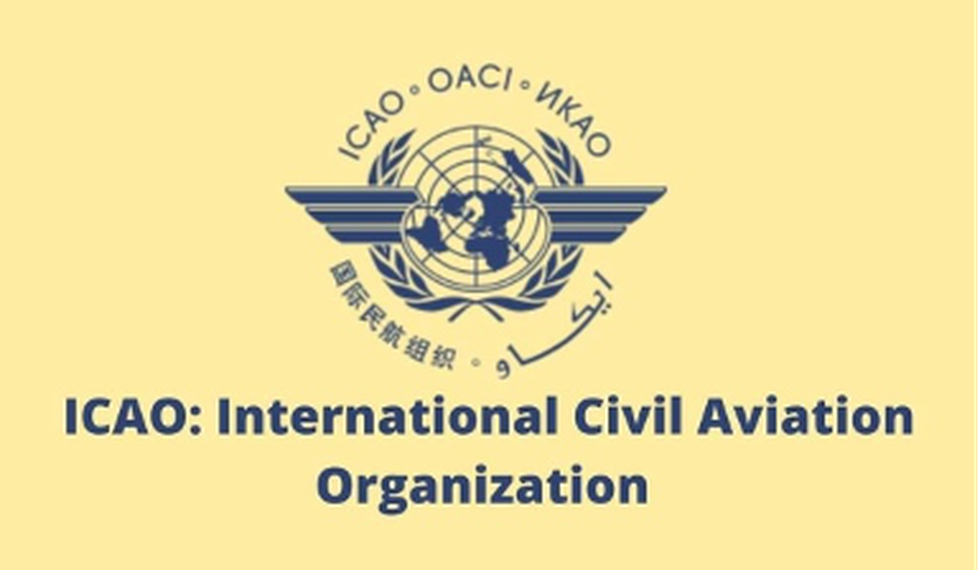
About International Civil Aviation Organisation (ICAO):
- ICAO is an intergovernmental specialized agency associated with the United Nations (UN).
- It was established in 1947 by the Convention on International Civil Aviation (1944) known as Chicago Convention.
- Headquarters: Montreal, Canada
- Functions:
- ICAO is dedicated to developing safe and efficient international air transport for peaceful purposes and ensuring a reasonable opportunity for every state to operate international airlines.
- It sets standards and regulations necessary for aviation safety, security and facilitation, efficiency, and economic development of air transport as well as to improve the environmental performance of aviation.
- It also serves as a clearinghouse for cooperation and discussion on civil aviation issues among its 193 member states.
- It also promotes regional and international agreements aimed at liberalizing aviation markets.
- It helps to establish legal standards to ensure that the growth of aviation does not compromise safety, and encourages the development of other aspects of international aviation law.
What is Carbon Offsetting and Reduction Scheme for International Aviation (CORSIA)?
- It is a global market-based measure designed to offset international aviation CO2 emissions in order to stabilize the levels of such emissions.
- Offsetting of CO2 emissions will be achieved through the acquisition and cancellation of emissions units from the global carbon market by aeroplane operators.
- It does not apply to domestic aviation. Under it, aircraft operators will begin monitoring their emissions from international flights and begin acquiring offsets for their emissions growth.
Prelims Pointers
April 30, 2023

About Unified Logistics Interface Platform:
- It was launched in 2022 as a part of the ‘National Logistics Policy (NLP)’.
- It is designed for enhancing efficiency and reducing the cost of logistics in India by creating a transparent, single-window platform to provide real-time information to all stakeholders.
- It was emphasized that the solution should have visibility of multi-modal transport and all the existing systems should be integrated with the ULIP system to create a National Single Window Logistics Portal.
- It will provide real-time monitoring of cargo movement and ensure the confidentiality of data with end-to-end encryption.
- There are three key components of this platform namely
- Integration with existing data sources of ministries
- Data exchange with private players
- Unified document reference in the supply chain
Prelims Pointers
April 30, 2023

About Front Running in Trading:
- What is it? It is an illegal practice in the stock market where an entity trades based on advanced information from a broker or analyst before the information has been made available to its clients.
- It is illegal in India.
- The strategies commonly used to front-run trades are Buy-Buy-Sell (BBS) trading pattern and the Sell-Sell-Buy (SSB) trading pattern.
What is Buy-Buy-Sell (BBS) trading pattern?
- In this trade pattern, the alleged front-runner by using the non-public information regarding an impending buy order of the big client places his buy order before the big client's buy order.
- As and when the big client places a buy order, the price of the security rises and the alleged front-runner sells the securities bought earlier.
- In this way, at the raised price the alleged front-runner makes a profit.
What is the Sell-Sell-Buy (SSB) trading pattern?
- In this trading pattern, the alleged front-runner by using the non-public information regarding an impending sell order of the big client places his sell orders before the big client's sell order.
When the big client places a sell order the price of the security falls which allows the alleged front-runner to buy back the securities at a lower price to meet his obligations which he had created earlier by selling securities.
Prelims Pointers
April 30, 2023
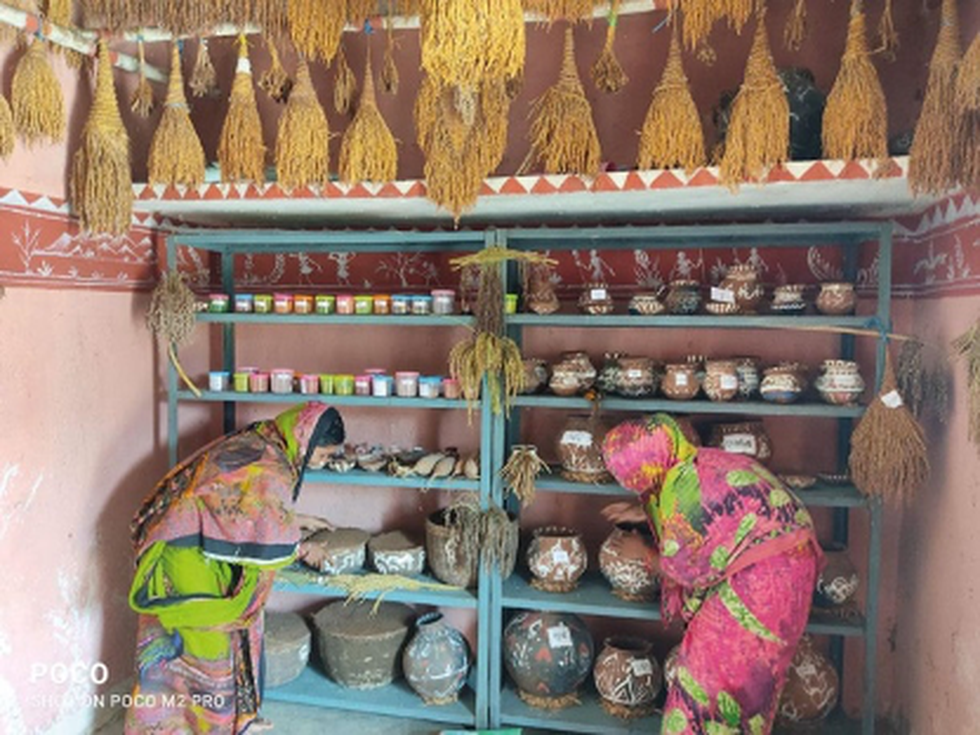
About Bihan Mela:
- It is known as the seed festival and the event is participated by the farmers.
- Preparations begin as soon as farmers have harvested Kharif crops, which include both hybrid and indigenous varieties of paddy, millets, maize and sorghum.
- Women are at the helm of this festival and carefully collect seeds of the indigenous varieties and store them in earthen pots.
- On a designated day in December, they decorate the pots with red and white motifs, place them in a bamboo basket and carry it on their head to the village where the fair is being organised.
- This was introduced to help farmers return to their traditional ways of farming like mixed cropping.
Key facts about the Kondh tribe
- They are a tribal group found in the hills and jungles of Orissa in eastern India.
- They fall into two broad divisions.
- The Hill or Maliah Konds, who are numerically the dominant group, inhabit the interior uplands and have retained much of their original tribal culture.
- The Plains Konds have had extended contact with the Oriya-speaking peoples of the lowlands and have adopted many aspects of Hindu religion and culture.
- They have several sub-tribes, for instance, the Dongria, Kovi, Kuttia, Languli, Penga, and Jharnia. Raj Konds etc.
- These tribal people speak languages called Kui and Kuvi.
- These belong to the Dravidian language family and have strong similarities to Telugu, Tamil, and Kannada.
- The language has no script of its own, with the Oriya script used for writing Kui, and the Telugu script used for Kuvi.
Prelims Pointers
April 30, 2023
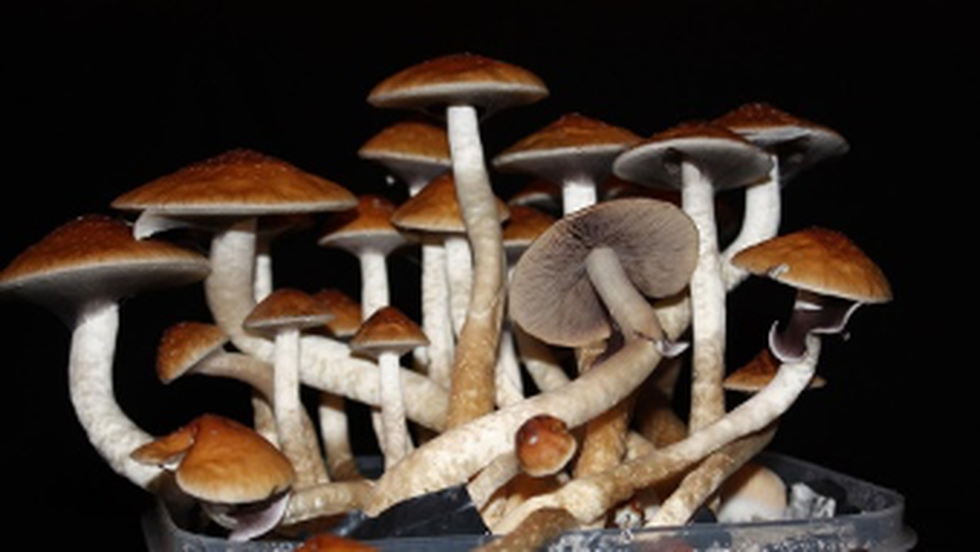
About Psychedelics:
- What are these? These are a group of drugs that alter perception, mood, and thought processing while a person is still clearly conscious.
- These are non-addictive and non-toxic.
- The two most commonly used psychedelics are d-lysergic acid diethylamide (LSD) and
- In India, the Narcotic Drugs and Psychotropic Substances Act 1985 prohibit the use of psychedelic substances.
- Ketamine a dissociative anaesthetic with psychedelic properties is used under strict medical supervision for anaesthesia and to treat treatment-resistant depression.
Key Facts about the Narcotic Drugs and Psychotropic Substances Act 1985
- It was enacted in 1985 and deals with drugs and their trafficking in the country.
- The act has since been amended thrice in 1988, 2001, and 2014.
- It was passed to meet India's global treaty obligations under the Single Convention on Narcotic Drugs, Convention on Psychotropic Substances and United Nations Convention against Illicit Traffic in Narcotic Drugs and Psychotropic Substances.
- The Act prohibits the production, manufacture, sale, purchase, transportation & consumption of many narcotic drugs or psychotropic substances, including cannabis, heroin, opium etc. The law, however, does not apply to bhang.
- Anyone who violates the NDPS Act faces punishment based on the quantity of the banned substance.
- The maximum punishment that can be given under this Act is the death penalty. However, the death penalty can only be given to repeat offenders, at the discretion of a judge.
- It allows courts to release an addict for treatment if found guilty of consumption of drugs.
Narcotics Control Bureau
- It works under the Union Ministry of Home Affairs.
- The agency is tasked with coordinating with state governments and other authorities, under NDPS Act, Customs Act, Drugs and Cosmetics Act and any other law, for the enforcement of provisions of the NDPS Act.
Prelims Pointers
April 30, 2023
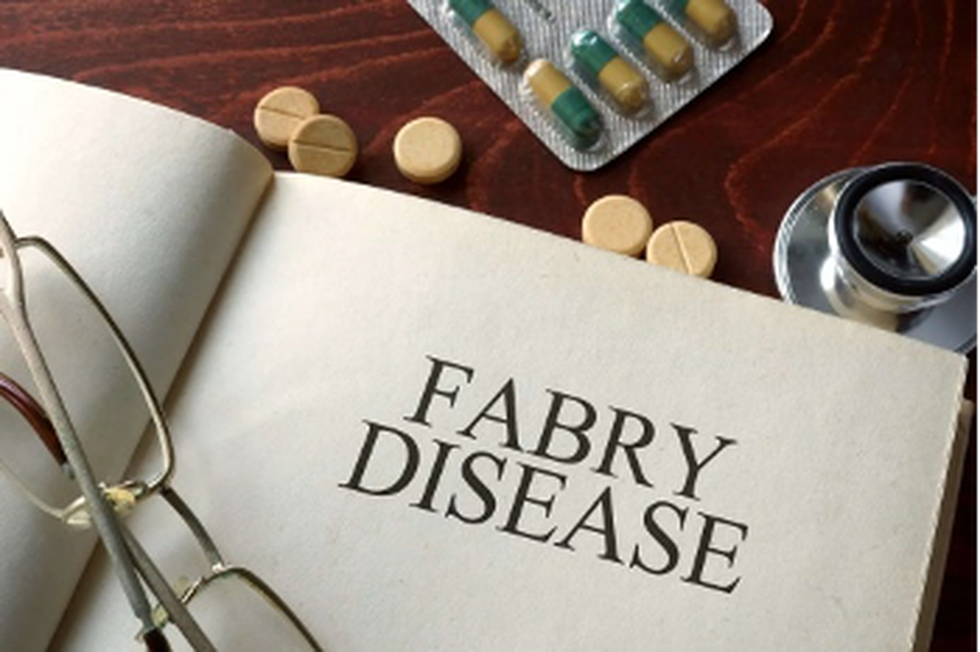
About Fabry Disease:
- It is a rare inherited disorder of glycosphingolipid (fat) metabolism resulting from the absent or markedly deficient activity of the lysosomal enzyme, alpha-galactosidase A (α-Gal A).
- It belongs to a group of diseases known as lysosomal storage disorders.
- This enzymatic deficiency is caused by alterations (mutations) in the α-galactosidase A (GLA) gene that instructs cells to make the α-galactosidase A (α-Gal A) enzyme.
- Lysosomes function as the primary digestive tract of cells.
- Symptoms: Numbness, tingling, burning or pain in the hands or feet, extreme pain during physical activity and heat or cold intolerance etc.
- The types of Fabry disease
- Classic type:Symptoms of this type appears during childhood or the teenage years. It may be noticeable as early as age two.
- Late-onset/atypical type: People with late-onset Fabry disease don’t have symptoms until they’re in their 30s or older.
- The first indication of a problem may be kidney failure or heart disease.
- Treatment: The patients are treated by intravenously administered enzyme replacement therapy (ERT) or Oral Chaperone Therapy
What are Lysosomes?
- These are simple tiny spherical sac-like structures present in the cytoplasm.
- These are membrane-enclosed organelles that contain an array of enzymes capable of breaking down all types of biological polymers—proteins, nucleic acids, carbohydrates, and lipids.
- These function as the digestive system of the cell, serving both to degrade material taken up from outside the cell and to digest obsolete components of the cell itself.
April 29, 2023
Prelims Pointers
April 29, 2023
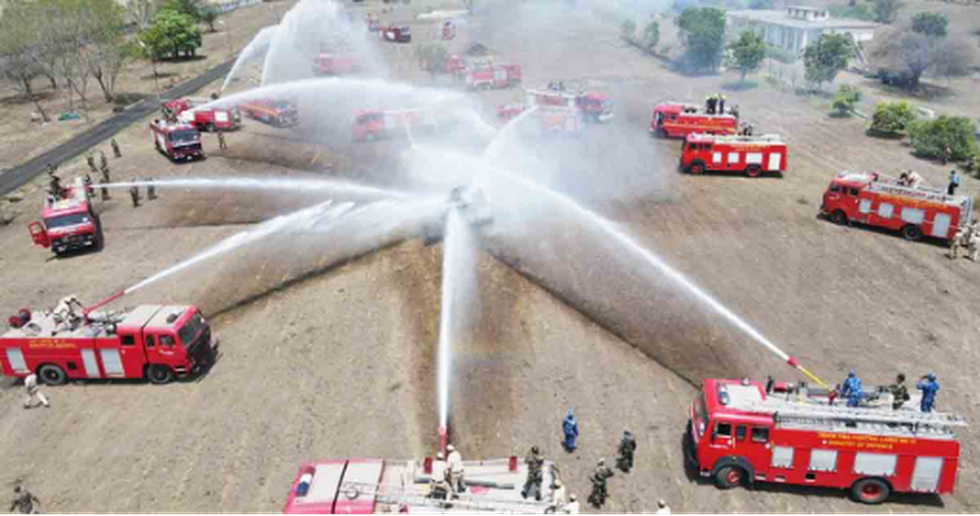
About AGNI DAMAN-23:
- It is a firefighting exercise conducted under the aegis of Indian Army’s HQ, Southern Command.
- Objective: Enhance synergy among firefighters to work together in the event of major fire incidents.
- The exercise was conducted at 29 Field Ammunition Depot (FAD) , Dehu Road, Pune.
- A total of 56 firefighting columns including 32 from civil agencies like National Disaster Relief Force (NDRF), State Disaster Relief Force (SDRF), MC Alandi, Fire Department Pimpri Chinchwad, PMRDA Akurdi, MIDC Ambi Talegaon, MC Talegaon Dhabade, Nagar Parishad Chakan, Main Fire Department Bhawani Peth, Tata Motors Ltd, Mahindra Vehicle Ltd & Bajaj Auto participated in the exercise.
- The exercise provided impetus & opportunity to the combatant manpower including central/state agencies to perform coordinated firefighting & render maximum aid in minimum possible time to the affected areas to save precious lives & valuable assets.
Prelims Pointers
April 29, 2023
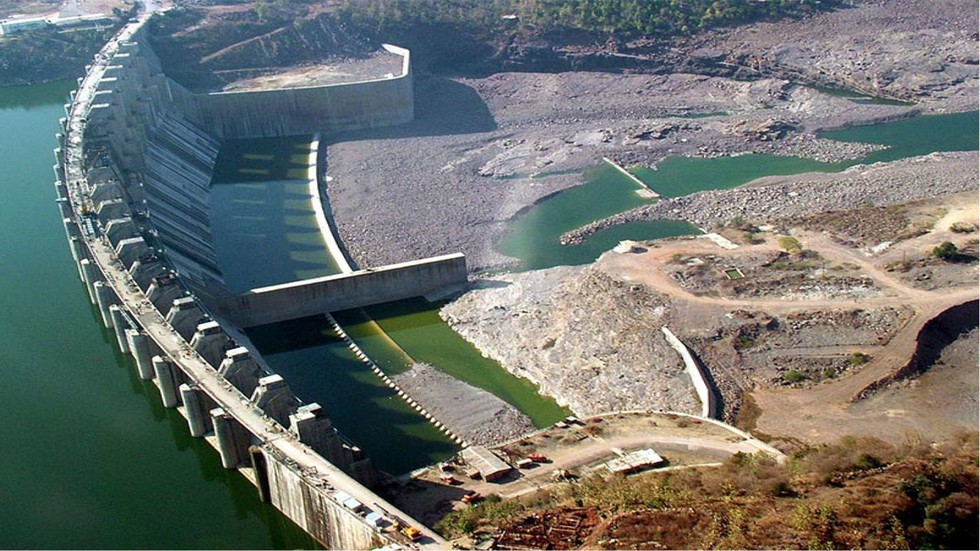
About Polavaram Project:
- It is an under-construction multi-purpose irrigation projecton the Godavari River in the Eluru District and East Godavari District in Andhra Pradesh.
- The project has been accorded National project statusby the Union Government of India.
- Objectives:
- Development of Irrigation, Hydropower and drinking water facilities in East Godavari, Vishakhapatnam, West Godavari and Krishna districts of Andhra Pradesh.
- The project envisages the generation of 960 MW of hydropower, drinking water supply to a population of 28.50 lacks in 611 villages
- The ultimate irrigation potential of the project is 4.368 lakh ha.
- The project implements the Godavari-Krishna link under the Interlinking of Rivers project.
- It envisages the transfer of 80TMC of surplus Godavari water to river Krishnawhich will be shared between Andhra Pradesh, Karnataka and Maharashtra.
Prelims Pointers
April 29, 2023

About Machine Learning:
- What is it? It is a branch of Artificial Intelligence (AI)and computer science which focuses on the use of data and algorithms to imitate the way that humans learn, gradually improving its accuracy.
- It gives computers the capability to learn without being explicitly programmed.
- It enables computers to learn automatically from past data.
- Machine learning uses various algorithms for building mathematical models and making predictions using historical data or information.
- Features of Machine learning:
- It is a data driven technology. Large amount of data generated by organizations on daily bases. So, by notable relationships in data, organizations makes better decisions.
- Machine can learn itself from past data and automatically improve.
- From the given dataset it detects various patterns on data.
- It is similar to data mining because it is also deals with the huge amount of data.
Prelims Pointers
April 29, 2023

About Bacillus Calmette–Guérin (BCG) vaccine:
- It is a vaccine for tuberculosis (TB)
- The vaccine was developed by Calmette and Guerin and was first administered to human beings in 1921.
- It is the most widely administered vaccine and is usually a part of the routine newborn immunization schedule.
- BCG vaccine also offers protection against non-tuberculous mycobacterial infectionslike leprosy and Buruli ulcer.
- It is often given to infants and small children.
- It is rarely given to anyone over the age of 16 because there is little evidence it works very well in adults.
Key facts about Tuberculosis (TB):
- Tuberculosis (TB) is caused by bacteria (Mycobacterium tuberculosis)that most often affect the lungs.
- It is curable and preventable disease.
- Two kinds of tuberculosis infection:
- Latent TB-The bacteria remain in the body in an inactive state. They cause no symptoms and are not contagious, but they can become active.
- Active TB- The bacteria do cause symptoms and can be transmitted to others. About one-quarter of the world's population has latent TB.
- People infected with TB bacteria have a 5–15% lifetime risk of falling ill with TB.
- However, persons with compromised immune systems, such as people living with HIV, malnutrition or diabetes, or people who use tobacco, have a much higher risk of falling ill.
- Transmission:
- TB is spread from person to person through the air.
- When people with lung TB cough, sneeze or spit, they propel the TB germs into the air.
- Even after inhaling a few drops of these germ, a person can get infected.
Prelims Pointers
April 29, 2023
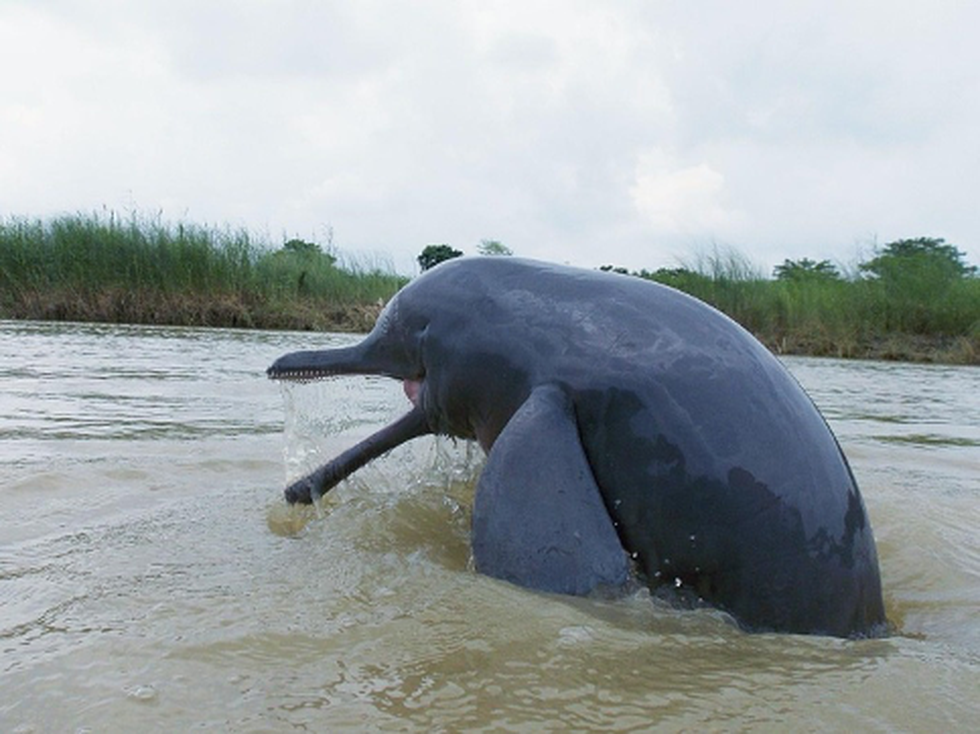
About Gangetic Dolphin:
- It is a freshwater species and one of the few river dolphins found in the world.
- It inhabits the Ganges-Brahmaputra-Meghna and Karnaphuli-Sangu river systems of Nepal, India, and Bangladesh.
- Common Names: Blind dolphin, Ganges dolphin, Ganges susu, hihu, side-swimming dolphin, South Asian River Dolphin
- Scientific name:Platanista gangetica
- The Gangetic Dolphin has been recognized as India's National Aquatic Animal.
- Description:
- A long thin snout, rounded belly, stocky body and large flippers are characteristics of the Ganges River dolphin.
- It feeds majorly on fishes and is are usually found in counter-current systems of the main river channel.
- Its eyes lack lens, and as a result, this species is also referred to as the "blind dolphin".
- They have a highly developed bio-sonar system that facilitates them to hunt for fish even in murky waters.
- Being a mammal, the Ganges River dolphin cannot breathe in the water and must surface every 30-120 seconds. Because of the sound it produces when breathing, the animal is popularly referred to as the 'Susu'.
- Conservation status:
- IUCN: Endangered
- Wildlife (Protection) Act: Schedule-I
- CITES: Appendix I
Prelims Pointers
April 29, 2023
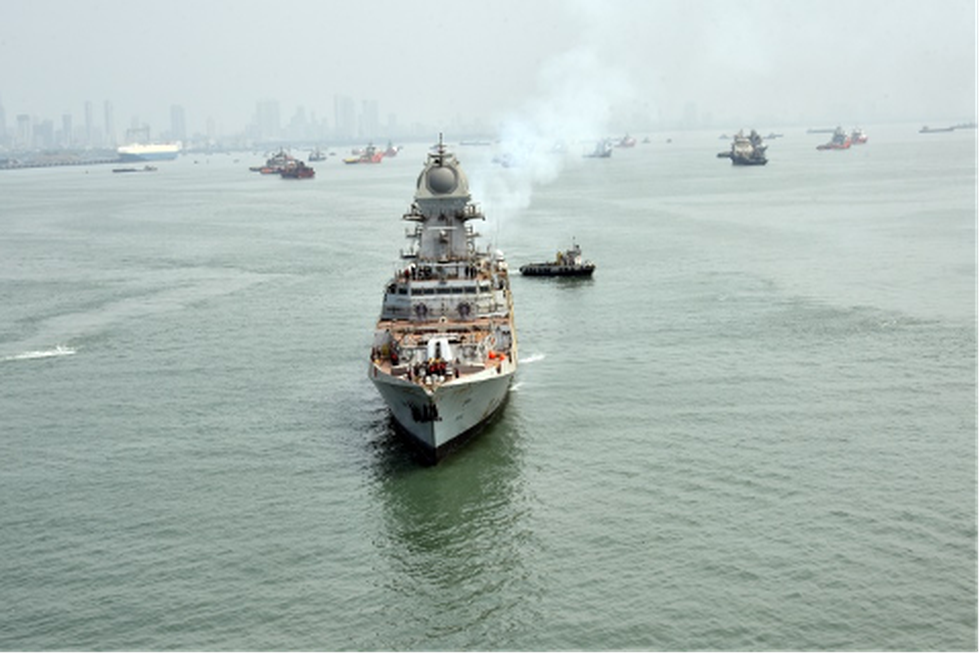
About INS Imphal:
- It is named after India’s Northeastern city of Imphal.
- The Navy’s Warship Design Bureau designed the ship in-house, and Mazagon Dock Ltd. (MDL) was responsible for its construction.
- Features
- The maximum speed is 30 knots; the length is 163 metres, while their width is 17 metres.
- It has a displacement capacity of 7400 tonnes when fully loaded.
- Major parts of the ship are made in India.
- The arsenal consists of 76mm Super Rapid Gun Mounts, Indigenous Torpedo Tube Launchers, Indigenous Anti-Submarine Rocket Launchers, Medium Range Surface-to-Air Missiles, BrahMos Surface-to-Surface Missiles etc.
What is Project 15B?
- Under this initiative, Visakhapatnam Class four warships (Visakhapatnam, Mormugao, Imphal, Surat) were planned.
- The Visakhapatnam and Mormugao are already commissioned in the Indian Navy.
Prelims Pointers
April 29, 2023
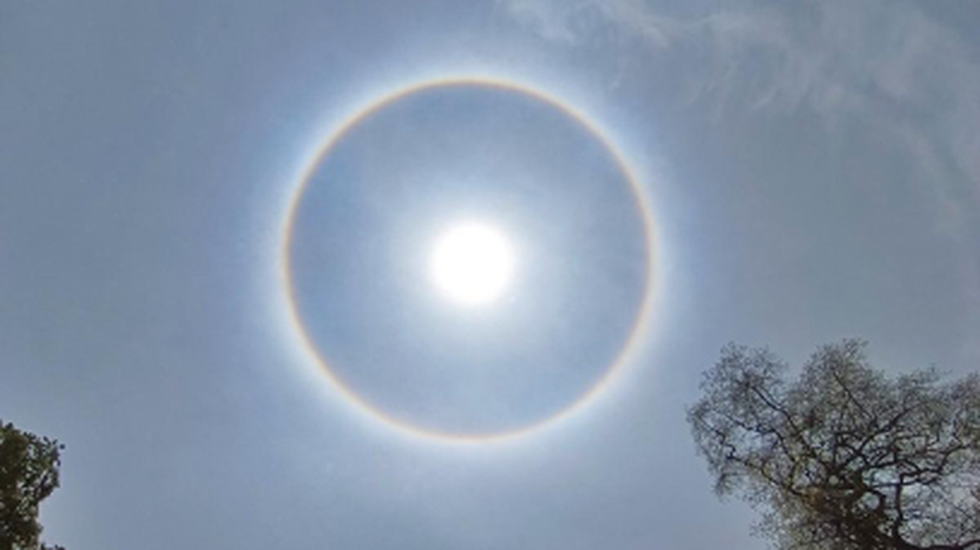
About Sun halo:
- What is it? It is an optical phenomenon that occurs due to sunlight refracting millions of hexagonal ice crystals suspended in the atmosphere.
- How it is formed?
- When white light passes through unique hexagonal ice crystals found in upper-level cirrus clouds, causing the halo to have colours.
- The clouds contain millions of tiny ice crystals, which refract, split and even reflect the light to give an impression of a circular rainbow ring.
- The crystals have to be oriented and positioned just so with respect to your eye, for the halo to appear.
- Light undergoes two refractions as it passes through the ice crystals and the bending that occurs depends on the ice crystal's diameter.
- The two refractions bend the light by 22 degrees from its original point, producing a ring of light around the Sun or the Moon.
- The lunar halos are mostly colourless as moonlight is not very bright.
- In the case of the Sun, these colours are more noticeable and appear as bright as a rainbow.
Prelims Pointers
April 29, 2023
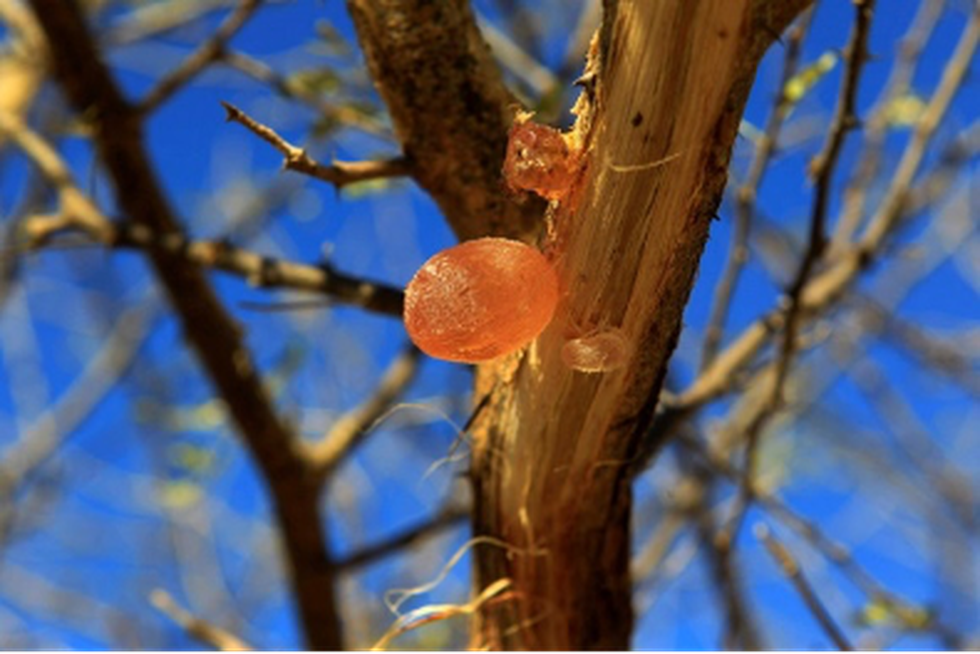
About Gum Arabic:
- It is the natural gum exuded by various species of Acacia trees.
- The main source of commercial gum Arabic is Acacia Senegal L.willd.and Acacia seyal trees.
- Distribution:
- The trees are native to North Africa and grow mainly in the sub-Saharan or Sahel zone of Africa and also in Australia, India and South America.
- It is found in some parts of India mainly in the dry rocky hills of southeast Punjab, in the northern Aravalli hills and other drier parts of Rajasthan and Gujarat.
- Major producing countries: Cameroon, Chad, Mali, Nigeria and Sudan (market share of about 70%).
- Method of harvesting:
- The gum exudes from the cracks on the bark of the tree under difficult conditions such as heat, dryness, wounds, and diseases.
- The gum flows naturally from the bark of the trees in the form of a thick and rather frothy liquid and speedily concretes in the sun into tears.
- Period of harvesting/collection:The collection of gum Arabic takes place at intervals during the dry season from November to May. During the rainy season, no gum is formed since the trees are in full bloom.
- Properties of Gum Arabic
- It is a neutral or slightly acidic salt of a complex polysaccharide containing calcium, magnesium, and potassium cations.
- It is non-toxic, odourless, and has a bland taste and it does not affect the odour, colour or taste of the system in which it is used
- It is somewhat yellowish in colour.
- It is insoluble in oils and in most organic solvents, but usually dissolves completely in hot or cold water forming a clear, mucilaginous solution.
- It yields L-arabinose, L-rhamnose, D-galactose and D-glucuronic acid after hydrolysis.
- It is used in many industries like Food, pharmaceuticals, cosmetics
Prelims Pointers
April 29, 2023
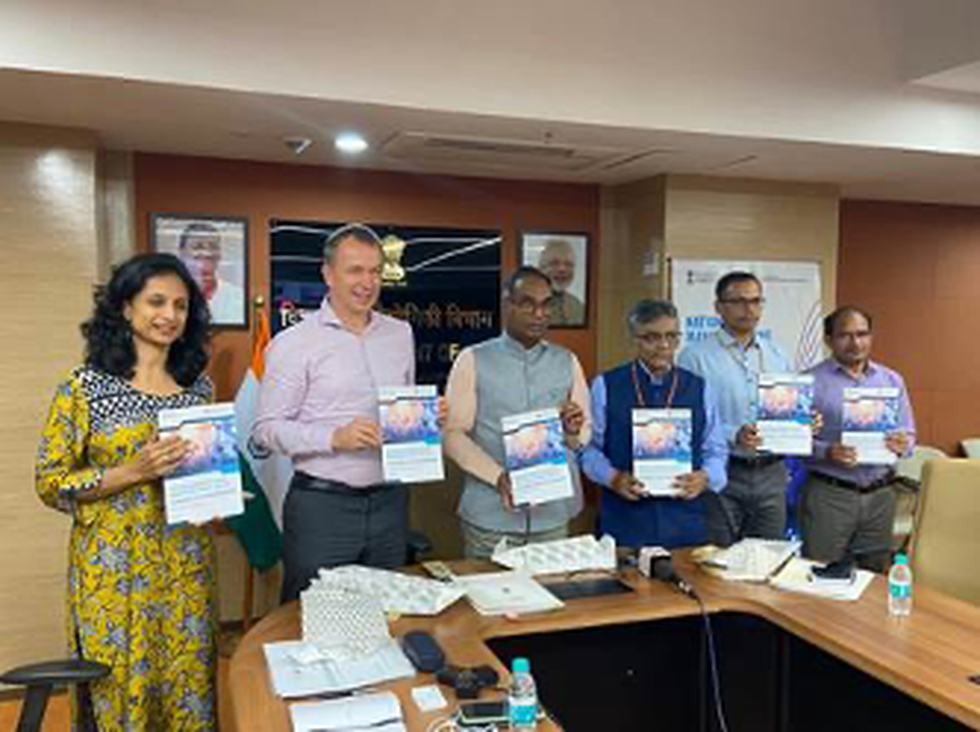
About National Manufacturing Innovation Survey (NMIS):
- It is a joint study by the Department of Science and Technology (DST) and the United Nations Industrial Development Organization (UNIDO)
- Aim of the survey: To evaluate the innovation performance of manufacturing firms in India.
- It had two specific components:
- Firm-level survey: It captured data related to types of innovations and innovative measures taken by firms, including the process of innovation, access to finance, resources, and information for innovation etc.
- Sectorial System of Innovation (SSI) survey: It mapped the manufacturing innovation system and its enabling role in achieving innovations in firms.
- The SSI study measured the convergence or divergence of current policy instruments in select five key manufacturing sectors important to the Indian economy – textiles; food & beverage; automotive; pharma; and ICT.
- The first National Innovation Survey was held in 2011.
Key Facts about United Nations Industrial Development Organization
- It is a specialized agency of the United Nationswith a unique mandate to promote dynamize and accelerate industrial development.
- It provides support to its 171 Member States through four mandated functions:
- Technical cooperation
- Action-oriented research and policy-advisory services.
- Normative standards-related activities
- Fostering partnerships for knowledge and technology transfer.
- India is a member of this organisation.
National Manufacturing Innovation Survey (NMIS) 2021-22 findings released, can help enhance competitiveness of Indian manufacturing
Prelims Pointers
April 29, 2023
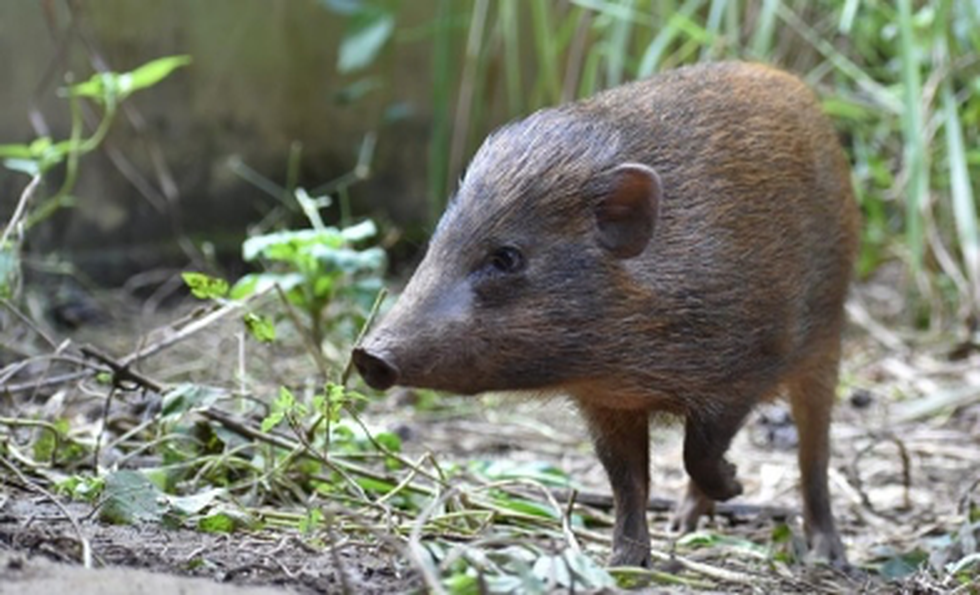
About Pygmy Hog:
- It is the smallest and rarest species of wild pig in the world.
- It is one of the very few mammals that build its own home, or nest, complete with a ‘roof’.
- It is an indicator species as its presence reflects the health of its primary habitat, tall and wet grasslands.
- Habitat: It prefers undisturbed patches of grassland dominated by early successional riverine communities, typically comprising dense tall grass intermixed with a wide variety of herbs, shrubs and young trees.
- Currently, the viable population of this pig in the wild is in the Manas Tiger Reserve in Assam.
- Conservation status:
- IUCN Red List: Critically Endangered
- Wildlife Protection Act, 1972: Schedule I
Key facts about African swine fever
- It is a highly contagious viral disease of domestic and wild pigs, whose mortality rate can reach 100%.
- The virus belongs to the Asfarviridae family.
- Symptoms:Vomiting, Diarrhea, reddening or darkening of the skin, particularly ears and snout, gummed up eyes etc.
- It can be spread through:
- Direct contact with infected pigs, faeces or body fluid
- Indirect contact via fomites such as equipment, vehicles or people who work with pigs between pig farms with ineffective biosecurity.
- Pigs eating infected pig meat or meat products.
- It is endemic to sub-Saharan Africabut has spread to many other regions of the world, including Asia and Europe.
- It is not known to affect human beings.
- There is no cure or precaution availablefor the infection and no approved vaccine.
April 28, 2023
Prelims Pointers
April 28, 2023
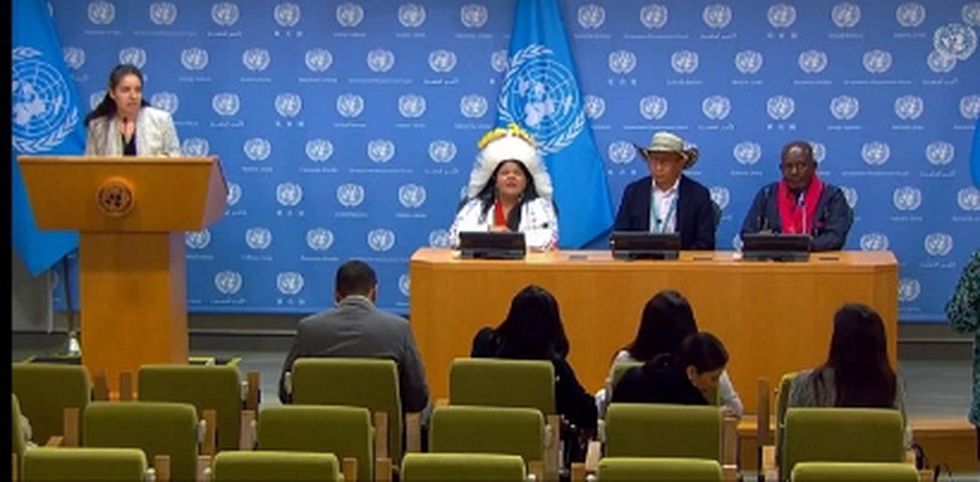
About UNPFII:
- It is a high-level advisory body to the Economic and Social Council.
- It was established on 28 July 2000.
- Mandate:To deal with indigenous issues related to economic and social development, culture, the environment, education, health and human rights.
- The first meeting of the Permanent Forum was held in May 2002, with yearly sessions thereafter.
- It is one of three UN bodies that is mandated to deal specifically with indigenous peoples’ issues.
- The others are the Expert Mechanism on the Rights of Indigenous Peoplesand the Special Rapporteur on the Rights of indigenous peoples.
Who are Indigenous Peoples?
- Indigenous peoples have in common a historical continuity with a given region before colonization and a strong link to their lands.
- They maintain, at least in part, distinct social, economic and political systems.
- They have distinct languages, cultures, beliefs and knowledge systems.
- They are determined to maintain and develop their identity and distinct institutions and they form a non-dominant sector of society.
Prelims Pointers
April 28, 2023
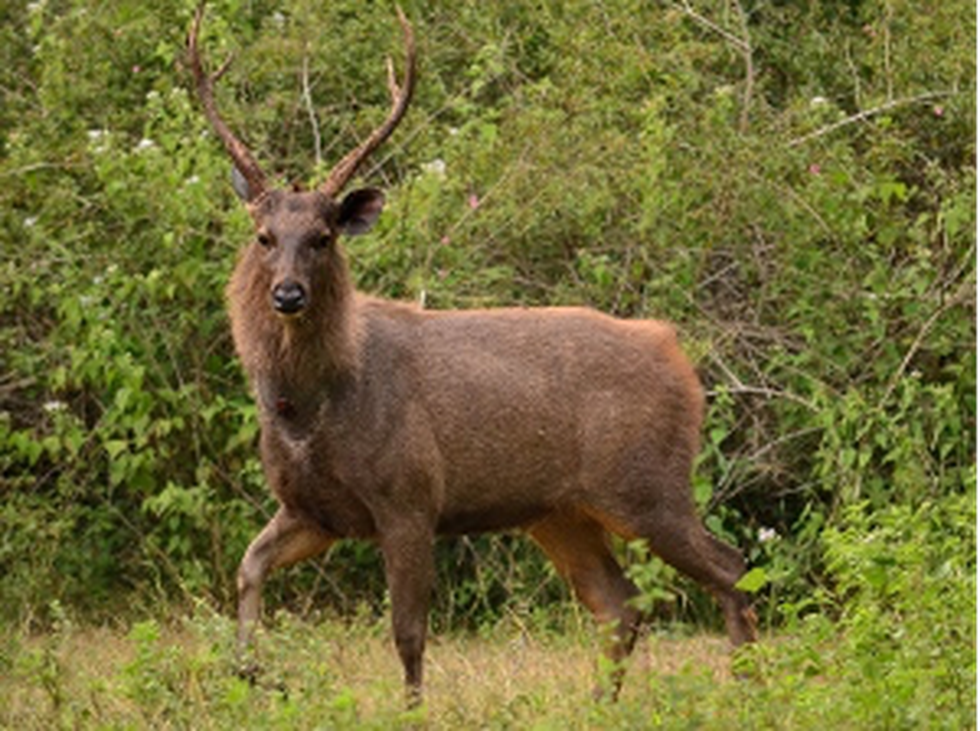
Why in the news?
- The Union Territory of Chandigarh Forest and Wildlife Department has declared its 2.0 to 2.75 km area as ESZ of the sanctuary, it expects a similar area of ESZ from Haryana and Punjab.
- Although the two states have only agreed to declare merely 100 metres of their area as ESZ, their proposals are pending before the Ministry of Environment, Forest and Climate Change (MoEFCC).
- Supreme Court ruled that each national park and wildlife sanctuary must have an eco-sensitive zone (ESZ) of a minimum of 1 km, measured from the demarcated boundary of such protected forest.
About Sukhna wildlife sanctuary
- It is located in the Chandigarh Union Territory.
- It forms the part of Sukhna Lake catchment area falling in Shivalik hills.
- Fauna: Sambar deer, Barking deer, and wild boar, as well as several species of birds, reptiles, and amphibians.
- Flora: The sanctuary is characterized by a mix of forests, grasslands, and wetlands, with the Sukhna Lake forming an important part of the ecosystem.
Key Facts about Shivalik Hills
- It is also called Siwalik Range or Outer Himalayas.
- It extends for more than 1,000 miles (1,600 km).
- It has an average elevation of 3,000 to 4,000 feet (900 to 1,200 metres).
- It rises abruptly from the plain of the Indus and Ganges (Ganga) rivers (south) and parallels the main range of the Himalayas (north), from which it is separated by valleys.
Prelims Pointers
April 28, 2023
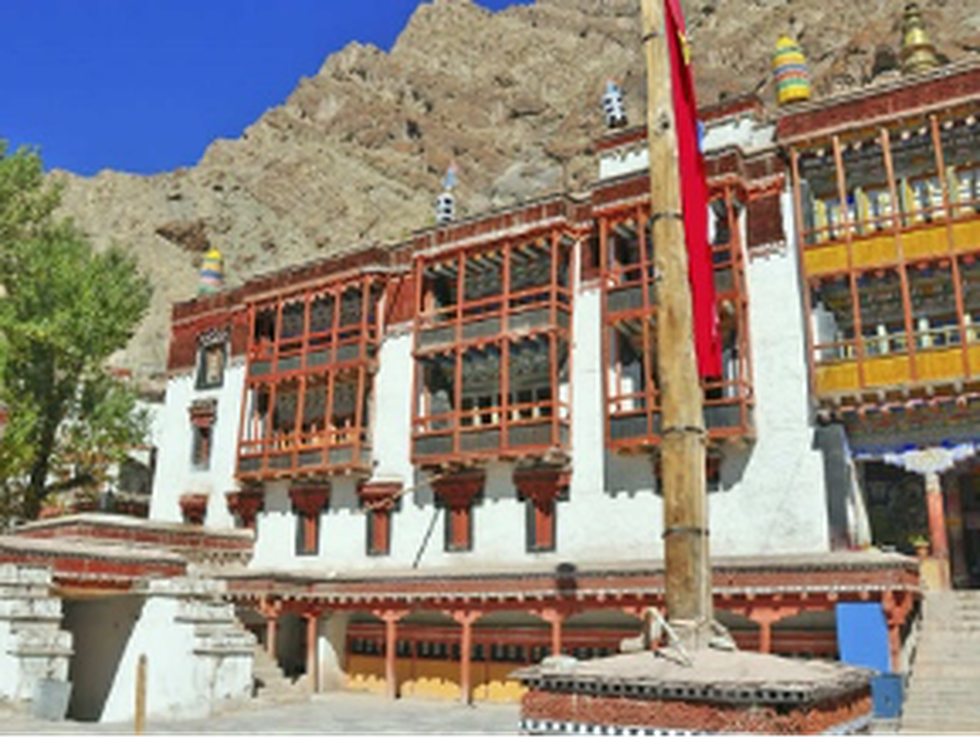
About Hemis Monastery:
- It is a Buddhist monastery located in Leh City,
- It belongs to the Drukpa lineage of Buddhism.
- The monastery was first established in the 11th century and later re-established in the 17th century by the Ladakhi King Sengge Namgyal.
- It is also famous for its 2-day religious ceremony known as the Hemis Festival.
- This festival is celebrated in honour of Padmasambhava which is observed here in
- It is the biggest and very richly endowed monastery.
Key Facts about the Drukpa Lineage Buddhism
- It was founded in the 12th century by Gyalwa Gotsangpa, a disciple of the famous Tibetan master Phagmo Drupa.
- It is particularly prominent in Bhutan.
- This is known for its efforts to empower women, and their nuns are allowed to receive the same level of training and education as their male counterparts.
Prelims Pointers
April 28, 2023
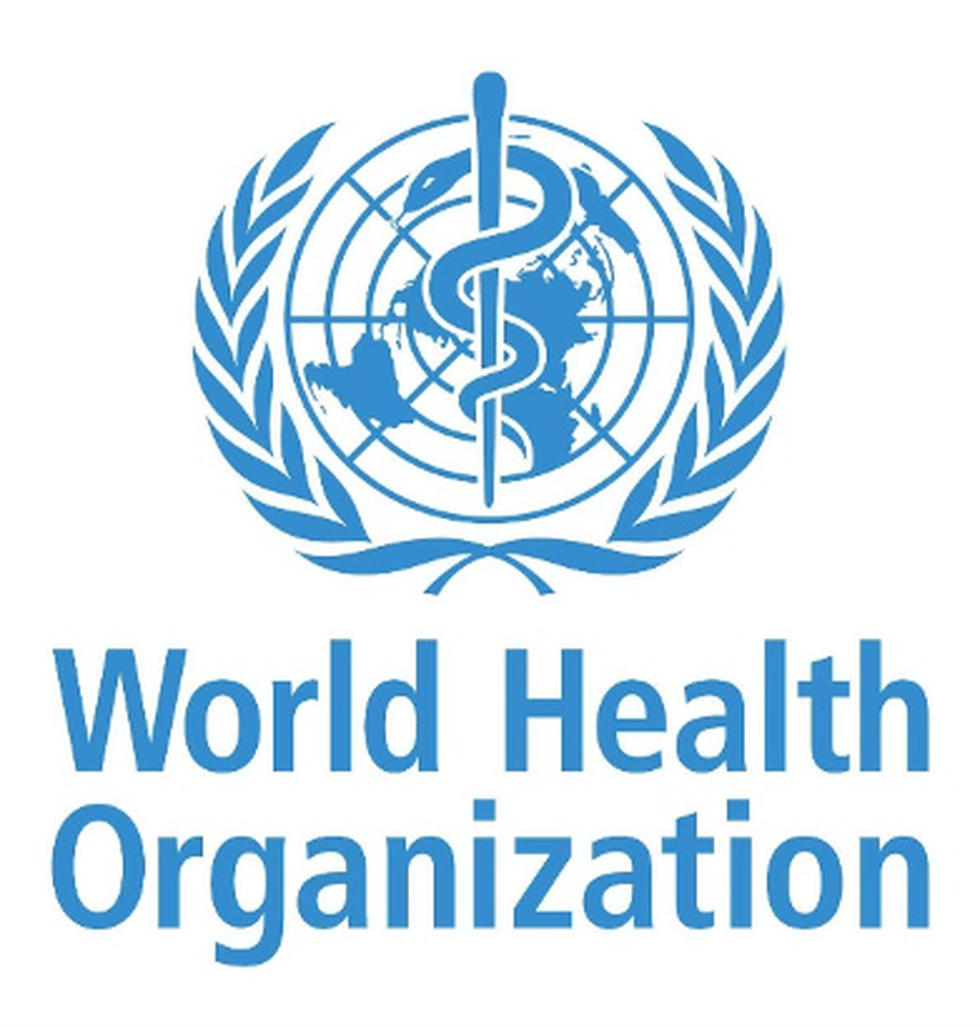
About PRET Initiative:
- What it is? The Preparedness and Resilience for Emerging Threats (PRET) Initiative is aimed at providing “guidance on integrated planning for responding to any respiratory pathogen such as influenza or coronaviruses”.
- It was announced at the Global Meeting for Future Respiratory Pathogen Pandemics held on 24-26 April 2023 in Geneva, Switzerland.
- The first module focuses on respiratory pathogens, including influenza, coronaviruses, and respiratory syncytial virus.
- It involves three-pronged approach which includes
- Update preparedness plans that affirm priority actionsand that have considered learnings from past events.
- Increase connectivity among stakeholders in pandemic preparedness planning through systematic coordination and cooperation. This includes building equitable systems; conducting joint exercises; and sharing information on good practices, challenges, and opportunities.
- Dedicate sustained investments, financing and monitoring of pandemic preparednesswith a particular focus on addressing the gaps identified during past pandemics and epidemics.
Key facts about WHO?
- It was established on April 7, 1948, with headquarters in Geneva, Switzerland.
- Structure:
- It is governed by the World Health Assembly, which is composed of representatives from all member states.
- The Assembly meets annually to set policies, approve budgets, and elect the Director-General.
- The Director-General is the chief executive officer of the WHO and is responsible for overseeing its operations.
- Its work focuses on promoting health and preventing disease, preparing for and responding to health emergencies, and improving access to health services and medicines.
- It works closely with a range of partners, including other UN agencies, governments, NGOs, and the private sector, to achieve its objectives.
- It is primarily funded by contributions from its member states. It also receives funding from philanthropic organizations and other sources.
Prelims Pointers
April 28, 2023
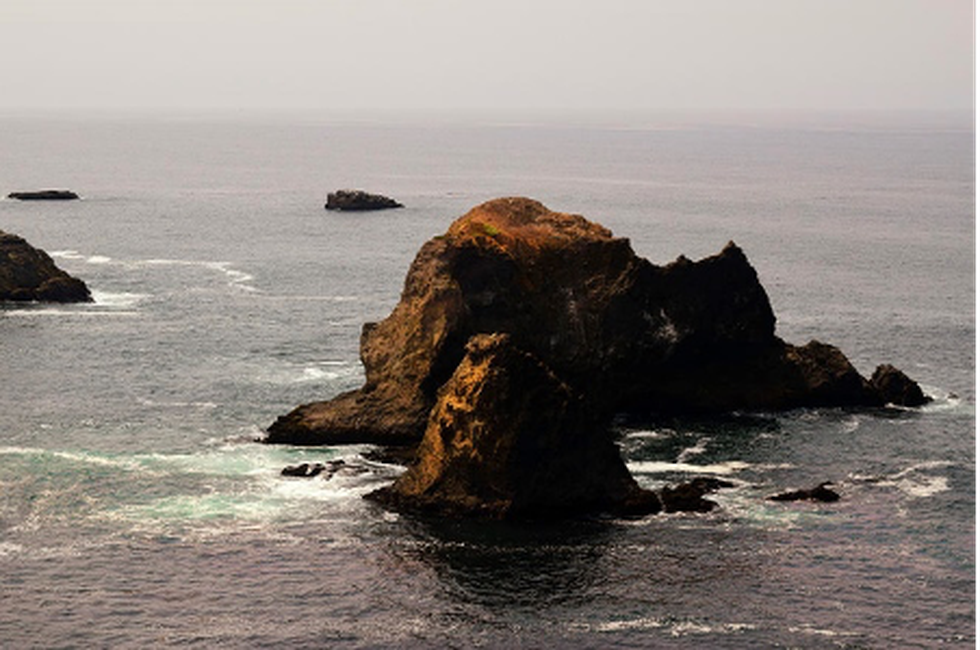
About Seamounts:
- It is an underwater mountain formed through volcanic activity.
- These are recognised as hotspots for marine life. Like volcanoes on land, seamounts can be active, extinct or dormant volcanoes.
- These are formed near mid-ocean ridges, where the earth’s tectonic plates are moving apart, allowing molten rock to rise to the seafloor.
- The planet’s two most-studied mid-ocean ridges are the Mid-Atlantic Ridge and the East Pacific Rise.
- Some seamounts have also been found near intraplate hotspots – regions of heavy volcanic activity within a plate – and oceanic island chains with a volcanic and seismic activity called island arcs.
- Significance of seamounts
- They provide information about the mantle’s composition and how tectonic plates evolve.
- Oceanographers also study seamounts to understand their influence on how water circulates and absorbs heat and carbon dioxide.
- Seamounts are home to diverse biological communities. They are good places for life because they can cause localised ocean upwelling – the process by which nutrient-rich water from deep within the ocean moves up to the surface.
Key Facts about the Mid-Atlantic Ridge
- It is the largest geological feature on the planet.
- It is a mostly underwater mountain range in the Atlantic Ocean.
- It is about 3 km in height above the ocean floor and 1000 to 1500 km wide, has numerous transform faults and an axial rift valley along its length.
- It separates the North American Plate from the Eurasian Plate in the North Atlantic and the South American Plate from the African Plate in the South Atlantic
Prelims Pointers
April 28, 2023
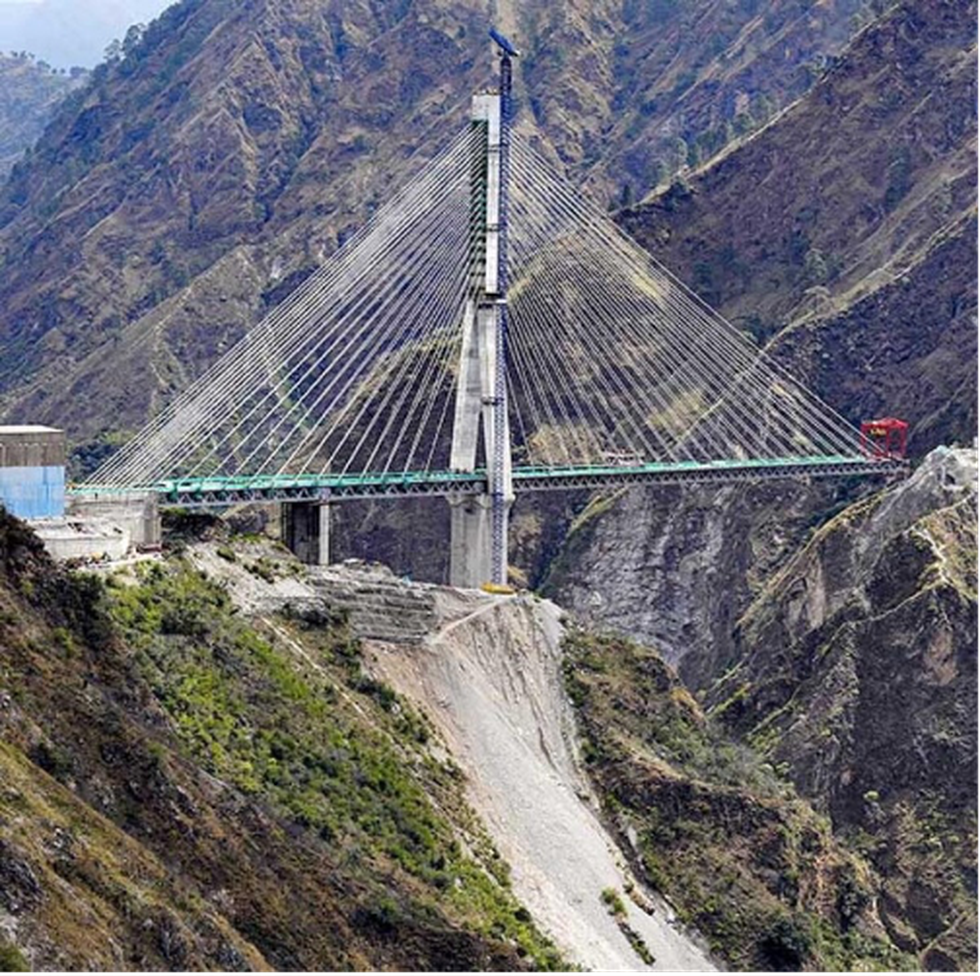
About Anji Khad Bridge:
- It is an under-construction rail bridge in Jammu & Kashmir on the Indian Railways Jammu – Baramulla rail line.
- It will connect the Union Territory of Kashmir with the rest of the country by train.
- It is constructed over the Anji River, a tributary of the Chenab River between Katra and Reasi.
- Anji Khad Bridge will be the first cable-stayed railway bridge in the country.
- It is an asymmetrical cable-stayed bridge balanced on the axis of a central pylon.
- The total length of the structure is 25 metres.
- It stands at a height of 331 meters above the river bed.
- The bridge has a single-line railway track and a 3.75-metre-wide service road.
- The project is being executed by Konkan Railway Corporation Limited (KRCL) and Hindustan Construction Company.
Prelims Pointers
April 28, 2023
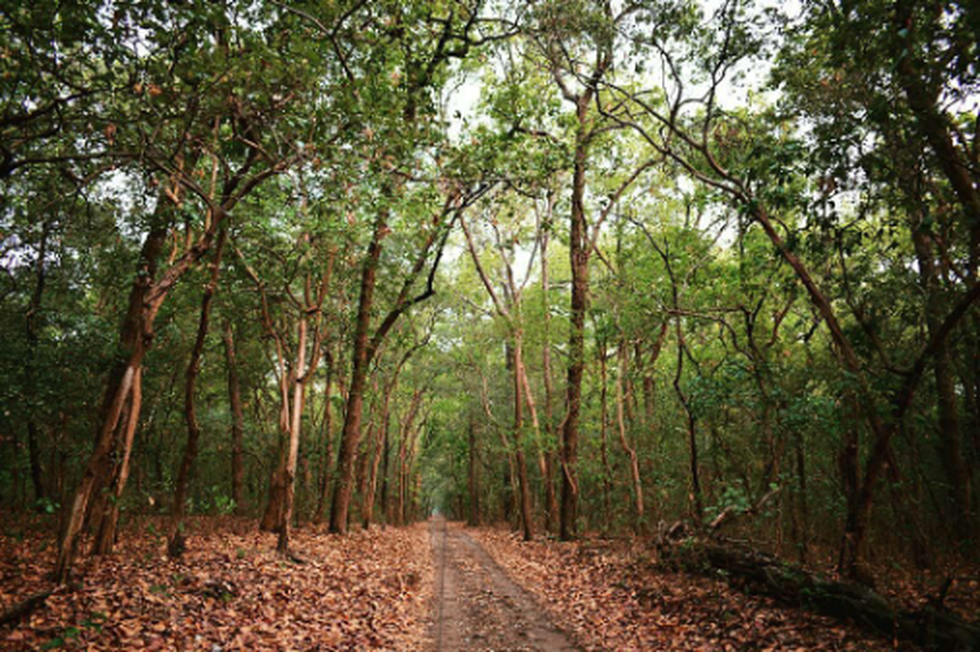
Why in News?
- The last sighting of a tiger in the Kalesar area was in 1913. Thus, the recent sight of the tiger in the Kalesar area is after a gap of 110 years.
About Kalesar National Park:
- Location:
- It is located in Yamunanagar District of Haryana.
- It is situated in the foothills of the Shiwalik ranges of the Himalayas.
- It was declared a National Park on 8th December 2003.
- Boundaries:
- River Yamuna lies to its east.
- Rajaji National Park, which is located in Uttrakhand, lies to the northeast of the park.
- Simbalbara National Park nestled in Shivalik Hills lies to the north, sharing a border with Himachal Pradesh.
- Morni Hills lies to the west.
- The park was named after a temple (known as Kalesar Mahadev temple) located inside the premise of the park.
- In earlier times, rulers under the Mughal and British Raj used the now park as hunting grounds.
- The park is also famous for its Dak bungalows – the administrative architectural bungalows built in colonial times.
- Flora:
- Most of the forest is covered by tall and dense sal trees.
- Other trees that are found in the forest are Semul, Bahera, Amaltas, Shisham, Khair, Sain, Chhal and Jhingan.
- Fauna: It houses many threatened animals like leopards, Ghoral, Barking deer, Sambar, Chital, Python, King Cobra, Monitor lizard etc.
Prelims Pointers
April 28, 2023
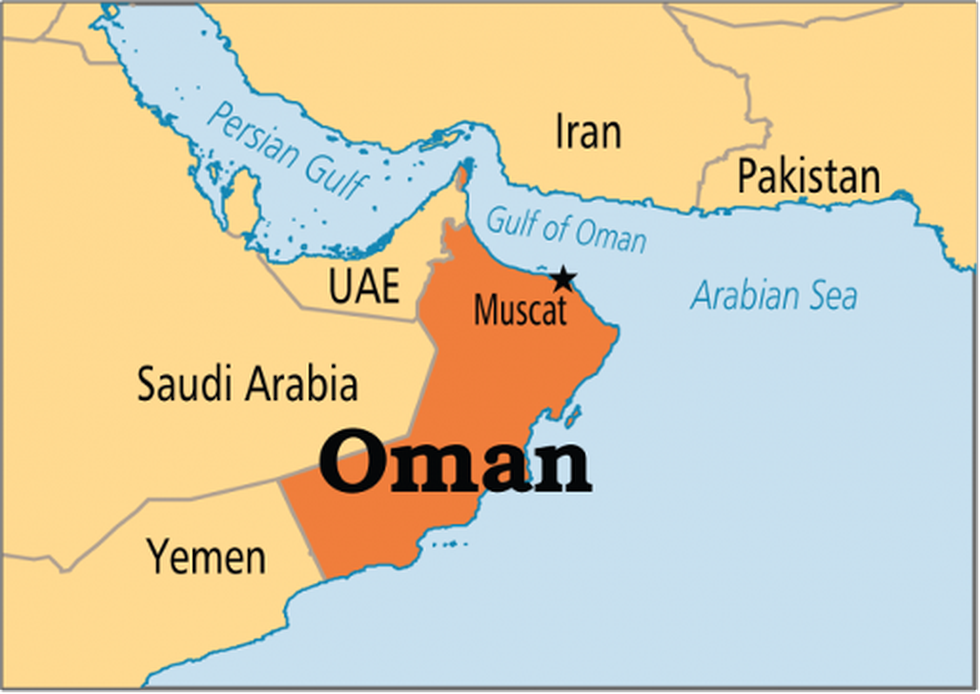
About Gulf of Oman:
- The Gulf of Oman or Sea of Oman, also known as the Gulf of Makran or Sea of Makran, forms the only entrance to the Persian Gulf from the Indian Ocean.
- It connects the Arabian Sea with the Strait of Hormuz, which then empties into the Persian Gulf.
- Bordering Countries: It is bordered by Pakistan and Iran in the north, by the United Arab Emirates in the west and by Oman in the south.
- The gulf is relatively shallow because of its origin as a fissure in the mountain spine now divided between Iran and Oman.
- The Gulf of Oman is about 320 km wide at its widest point between Cape al-Hadd in Oman and Gwadar Bay on the Iran-Pakistan border. It narrows to 35 miles (56 km) at the Strait of Hormuz.
- It is approximately 560 km long.
- Some of the significant islands that are located in the Gulf of Oman include Sheytan Island, Al Fahal Island, Dimaniyat Islands, and the Sawadi Islands.
- The major international shipping ports that are situated in the Gulf of Oman include Port Sultan Qaboos Muttrah in Muscat, Oman; Chabahar Port in Iran; the Port of Fujairah and Khor Fakkan Container Terminal in the United Arab Emirates.
- Roughly one-third of the world's oil is exported via the Strait of Hormuz and the Gulf of Oman.
Prelims Pointers
April 28, 2023
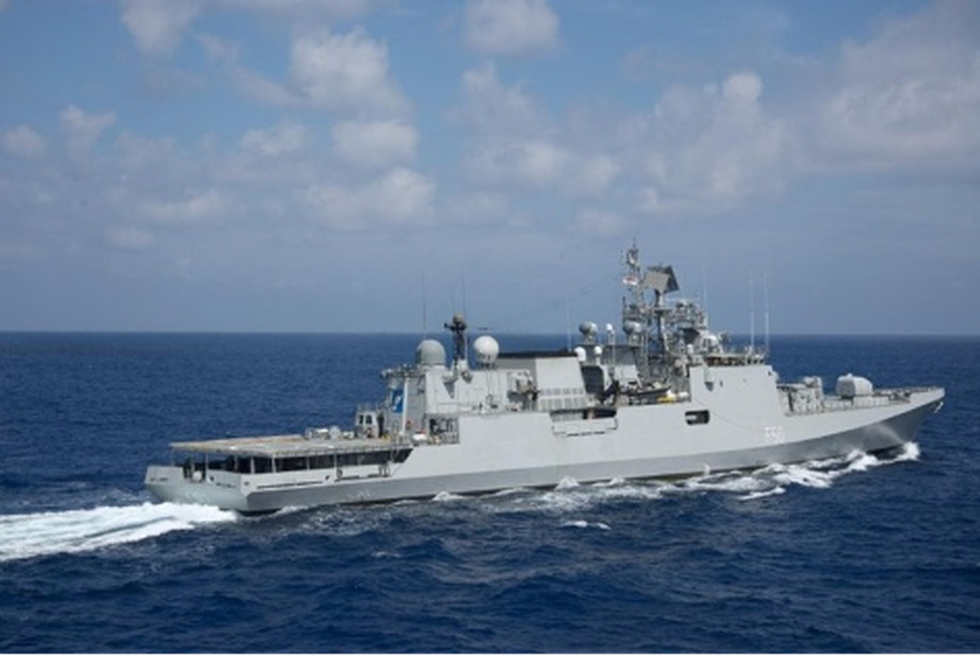
About INS Tarkash:
- It is a state-of-the-art stealth frigate of the Indian Navy equipped with a versatile range of weapons.
- Tarkash belongs to the Talwar class of guided missile frigates. These are modified Krivak III class frigates built by Russia.
- It was built by the Yantar shipyard in Kaliningrad, Russia.
- It was commissioned into Indian Navy service on 9 November 2012 at Kaliningrad and joined the Western Naval Command on 27 December 2012.
- Features:
- It has a length of 124.8 m, a beam of 15.2 m, and a draught of 4.2 m (13 ft 9 in).
- Top Speed: 32 knots (59 km/h; 37 mph).
- It has been equipped with a weapon sensor that enables it to address threats in all dimensions.
- It uses stealth technologies and a special hull design to ensure a reduced radar cross-section.
- It can board one Ka-28 Helix-A antisubmarine helicopter or one Ka-31 Helix-B airborne early warning helicopter,
- It is also equipped with BrahMos missiles instead of the Klub-N missiles, which makes it different from the earlier flight of Talwar-class ships.
Key Facts about “Operation Kaveri”:
- It is a rescue operation being carried out by the Indian Government to bring back Indian citizens stranded in Sudan.
- According to the official data, the number of Indians in Sudan is around 4,000.
- Why the need for evacuation? Sudan has been witnessing deadly fighting between the country's army and a paramilitary group, the paramilitary Rapid Support Forces (RSF), that has reportedly left several hundred’s dead.
- Cause of fighting? It was triggered by disagreement over an internationally backed plan to form a new civilian government four years after the fall of autocrat Omar al-Bashir and two years after the military coup. Both sides accuse the other of thwarting the transition.
Prelims Pointers
April 28, 2023

About Thirunelly Temple:
- It is an ancient temple dedicated to the Lord Maha Vishnu.
- Location: It is located on the sides of Brahmagiri Hill, a part of the Sahyadri Mountain Ranges in the Wayanad district of Kerala.
- It is also known as the Sahyamala Kshetram and Kashi of the South.
- It is the only temple in the world where the devotees can perform all the rituals related to one’s life, starting from birth to death and life after death.
- The rituals in this temple are performed on the banks of stream Papanashini, which originates from the Brahmagiri hills.
- Legend behind:
- It’s an ancient temple where Lord Brahma is said to establish the idol of Lord Vishnu.
- It’s believed that he found the idol on a gooseberry (amla) tree, locally known as nelli, thus giving Thirunelli its name.
- Architecture:
- The temple embodies classical, traditional Kerala architecture.
- The shrine is shielded with 30 granite columns, and the ground is paved with huge square pieces of granite.
- The inner sanctum is surrounded by a tile-roofed structure, and there is an open courtyard around the Sanctorum.
- Along the outer wall of the temple is a cloister made of granite pillars cut in cubical style.
- The main deity idol of the temple is in the form of Chathurbhuja - Lord Vishnu with his four hands.
Indian National Trust for Art and Cultural Heritage (INTACH):
- INTACH is an autonomous non-governmental Indian non-profit society that seeks to preserve Indian culture and heritage.
- It was founded in 1984 with the vision to spearhead heritage awareness and conservation in India.
- Headquarters: New Delhi
- It operates through various divisions such as Architectural Heritage, Natural Heritage, Material Heritage, Intangible Cultural Heritage, Heritage Education and Communication Services (HECS), Crafts and Community Cell, Chapters, INTACH Heritage Academy, Heritage Tourism, Listing Cell and Library, Archives and Documentation Centre.
April 27, 2023
Prelims Pointers
April 27, 2023
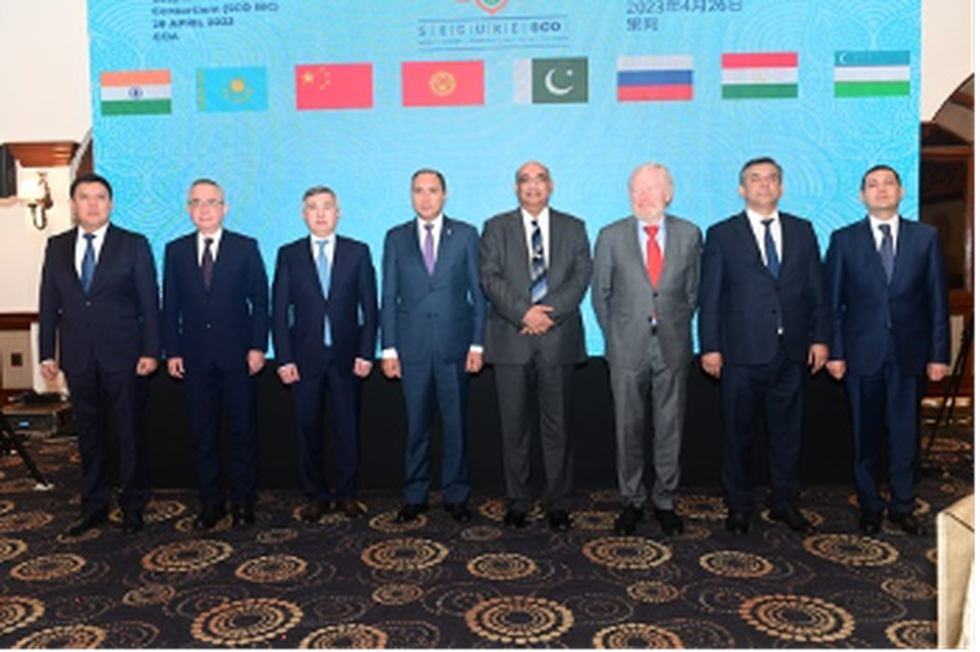
About SCO Interbank Consortium:
- It was established by the member countries of the Shanghai Cooperation Organisation on 26 October 2005.
- It provides funding and bank services for investment projects sponsored by the governments of the SCO member states.
- The main objectives of the consortium are to provide financial services, promote trade, and facilitate investment among the member states.
- The SCO IBC Council meets ad hoc upon the consensus of all of the parties at least once per year.
- The Presidency of the Council is carried out on a rotational basis.
- It consists of major banks from the member countries, such as the Industrial and Commercial Bank of China, the National Bank of Kazakhstan, and the Bank of Russia.
- The first meeting of the SCO Interbank Association was held in Beijing on 21–22 February 2006.
Prelims Pointers
April 27, 2023
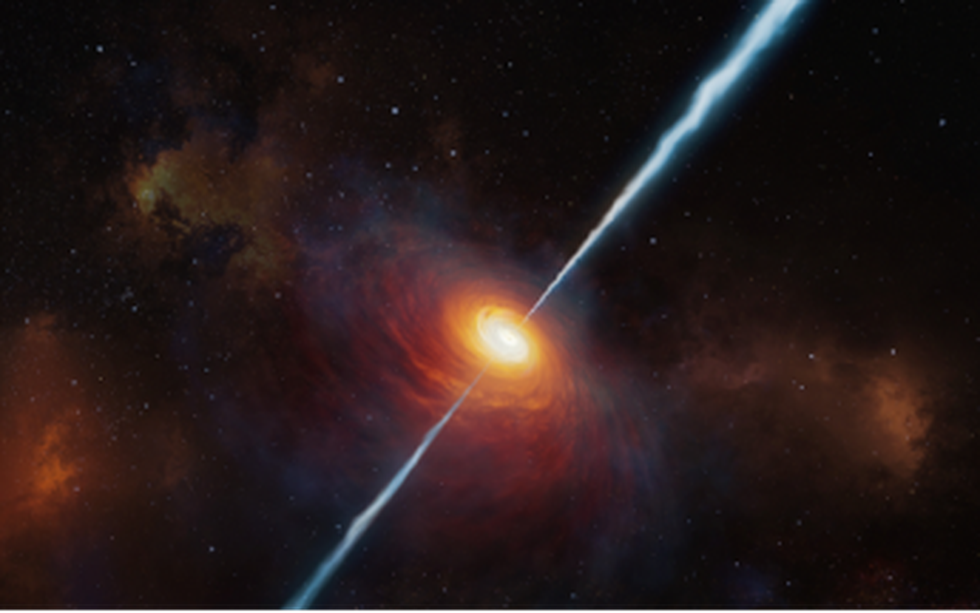
About Quasars:
- The quasi-stellar radio sources (Quasars) were first discovered six decades ago.
- These are very luminous objects in faraway galaxies that emit jets at radio frequencies.
- They are located in supermassive black holes, which sit in the centre of galaxies.
- These are formed by the energy emitted by materials spiralling around a black hole right before being sucked into it.
- Most quasars are larger than our solar system. A quasar is approximately 1-kilo parsec in width.
- When galaxies collide, it pushes the gas from the outer reaches of the galaxies to the centre.
- As the supermassive black hole gorges on the gas, it releases ferocious fountains of energy in the form of radiation, leading to the quasar.
What is a Blackhole?
- A black hole is an area in space with extremely intense gravity from which even light cannot escape.
- A black hole can be formed by the death of a massive star.
- Examples of a black hole are Cygnus X-1 and Sagittarius A*
Prelims Pointers
April 27, 2023

About the North Sea Summit:
- It is the second summit which was held in the city of Ostend.in
- Participant countries: Belgium, Denmark, France, Germany, Ireland, Luxembourg, Netherlands Norway, and the United Kingdom
- Objective: To make the North Sea the largest green energy centre in Europe by accelerating the deployment of offshore wind turbines.
- The summit sets ambitious targets including the production of at least 120 gigawatts (GW) of offshore wind energy in the North Sea by 2030
- The first summit in 2022 had Esbjerg Declaration which was held in Denmark.
Key Facts about the North Sea
- It is the northeastern arm of the Atlantic Ocean located between the British Isles and the mainland of northwestern Europe.
- It is bordered by
- The island of Great Britainto the southwest and west.
- The Orkney and Shetland Islands are to the northwest.
- Norwayto the northeast, Denmark to the east.
- Germany and the Netherlands to the southeast.
- Belgium and Franceto the south.
- It is connected to the Atlantic by the Strait of Dover and the English Channeland opens directly onto the ocean between the Orkney and Shetland Islands and between the Shetland Islands and Norway.
Prelims Pointers
April 27, 2023
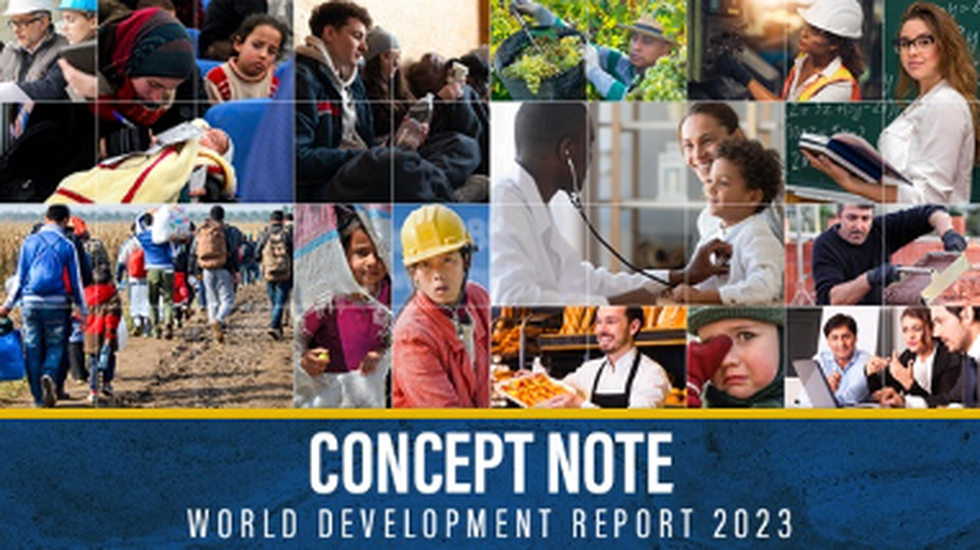
Key Highlights of the Reports:
- About 2.3 per cent of the world’s population—184 million people, including 37 million refugees—live outside their country of nationality.
- It found that low-skilled Indians who migrated to the United States tended to see a significant gain in their income of around 500%.
- The gains for highly-skilled workers such as engineers or doctors are much higher, however, low-skilled workers are also finding themselves having a multi-fold jump in their income.
- It categorised the migrants into four types – Refugees with skills in demand, economic migrants with skills that match with demand, distressed migrants and
- India-US, India-Bangladesh and India- Gulf Cooperation Council have been considered among the top migrant corridors.
Key Facts about World Bank
- It is an international financial institution that provides loans and grantsto the governments of low and middle-income/developing countries to pursue capital projects.
- It was established along with the IMF at the 1944 Bretton Woods Conference.
- The WB Group Includes
- International Bank for Reconstruction and Development (IBRD): It provides loans, credits and grants.
- International Development Association (IDA): It provides low or no-interest loans to low-income countries.
- International Finance Corporation (IFC): It provides investment, advice and asset management to private companies and governments.
- Multilateral Guarantee Agency (MIGA): It ensures lenders and investors against political risks such as war.
- International Centre for the Settlement of Investment Disputes (ICSID): It settles investment disputes between investors and countries.
- India is not a member of ICSID.
Prelims Pointers
April 27, 2023
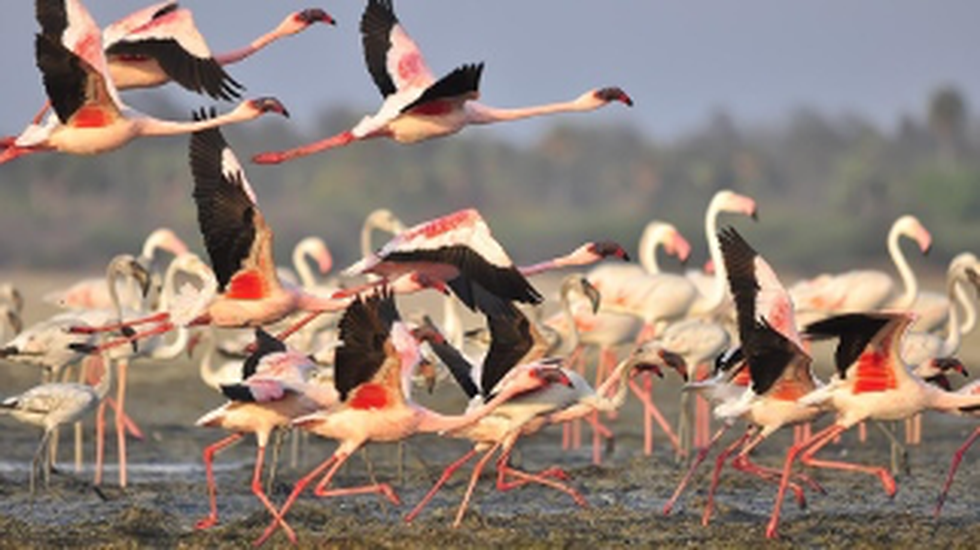
About Lesser Flamingo:
- It is the smallest of all flamingos but has the largest population.
- It possesses the "hallux" or hind toe that some other flamingos do not have.
- Males are a little taller than females.
- Habitat: It inhabits coastal and inland wetlands.
- Geographical distribution: Africa, Asia continents and in that especially Sub-Saharan Africa, South Asia, North Africa
- They mostly eat blue-green algae but occasionally will take crustaceans and small insects.
- It is serially monogamous, meaning they form pairs that remain together while they are raising the young
- Conservation status
- IUCN: Near Threatened
Key Facts about the Pulicat Lake
- It is the second-largest brackish water lake in the country.
- It lies at the border of the states of Andhra Pradesh and Tamil Nadu. (Majorly lies in Andhra Pradesh)
- The long and narrow Sriharikota Island, which separates Pulicat Lake from the Bay of Bengal,
- It is popular as a flamingo-watching site and for water activities.
- Both the South West and North-East monsoons provide rain to the area where Pulicat Lake is located.
Prelims Pointers
April 27, 2023
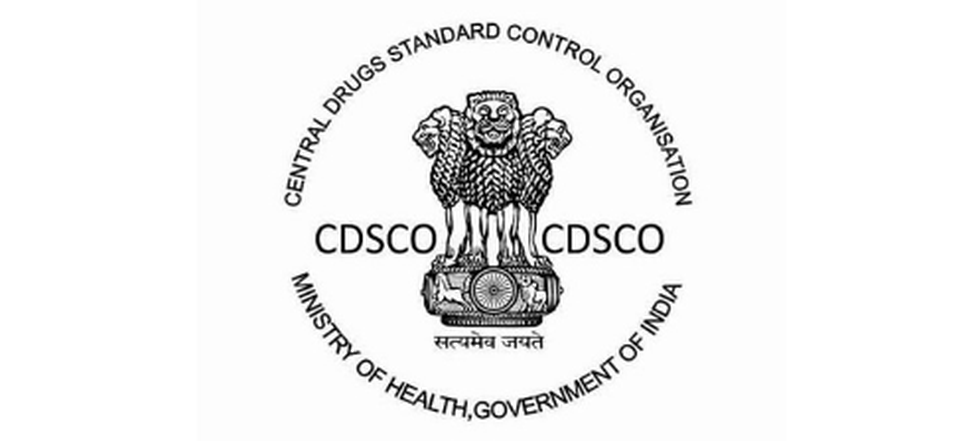
About Central Drugs Standard Control Organization (CDSCO):
- It is the National Regulatory Authority (NRA) of India for the medical devices industry under the provisions of the Drugs & Cosmetics Rules.
- It works under the Ministry of Health & Family Welfare.
- Drugs Controller General of India (DCGI) is the head of the CDSCO.
- Headquarters: New Delhi.
- Under the Drugs and Cosmetics Act, CDSCO is responsible for,
- Approval of New Drugs;
- Conduct of Clinical Trials;
- Laying down the standards for Drugs;
- Control over the quality of imported Drugs in the country;
- Coordination of the activities of State Drug Control Organizations;
- CDSCO, along with state regulators, is jointly responsible for the grant of licenses of certain specialized categories of critical Drugs such as blood and blood products, I. V. Fluids, Vaccine and Sera.
Prelims Pointers
April 27, 2023
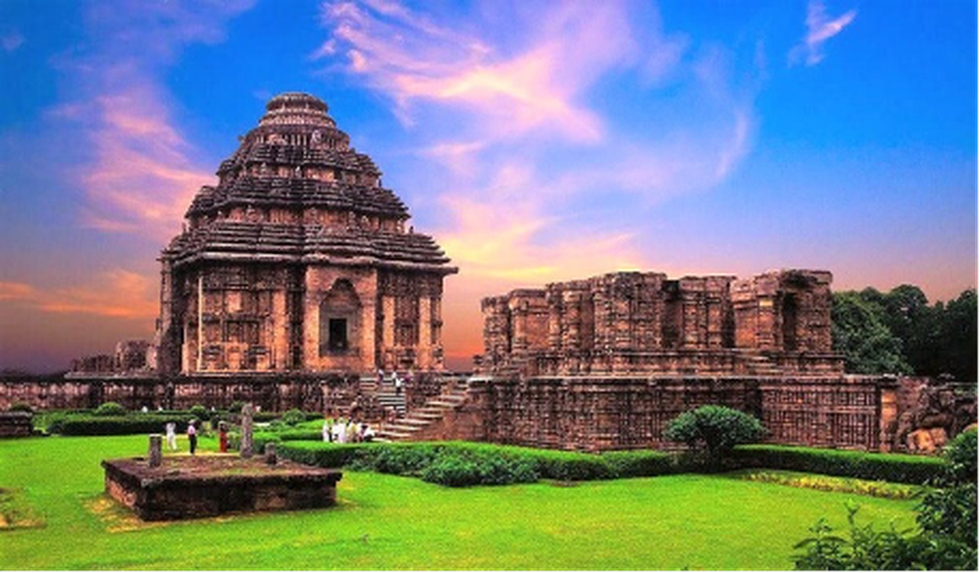
About Konark Sun Temple:
- Location: It is located on the coastline of Odisha in Puri district.
- It was built by King Narasimha Deva I of the Eastern Ganga Dynasty in 1244.
- It was given the status of a World Heritage Site in 1984 by UNESCO.
- Features:
- Also called the Surya Devalaya, the temple is dedicated to the Hindu god Surya.
- It is a classic example of the Odisha style of Architecture or Kalinga Architecture.
- The temple complex has the appearance of a 100-foot high solar chariot, with 24 wheels and pulled by six horses, all carved from stone.
- It is oriented towards the east so that the first rays of the sunrise strike the main entrance.
- The wheels of the temple are sundials, which can be used to calculate time accurately to a minute.
- Around the base of the temple, there are images of animals, foliage, warriors on horses and other interesting structures.
- On the walls and roof of the temple, beautiful sensual figures are carve
- The temple, built from Khondalite rocks, is also known as 'BLACK PAGODA' due to its dark colour.
- The temple remains a site of contemporary worship for Hindus, during the annual Chandrabhaga Festival, around the month of February.
Prelims Pointers
April 27, 2023
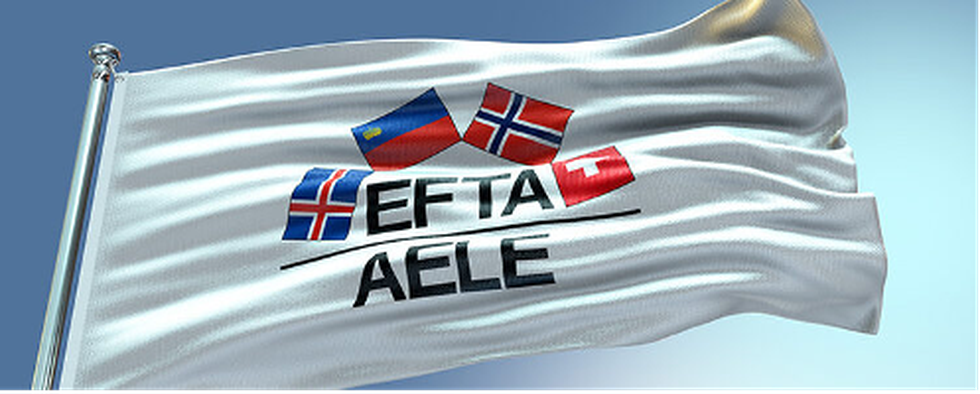
About European Free Trade Association (EFTA):
- It is an intergovernmental organization established in 1960 by the Stockholm Convention.
- Objective: Promotes free trade and economic integration between its members within Europe and globally.
- EFTA currently has 4 member countries: Iceland, Liechtenstein, Norway and Switzerland.
- The EFTA countries have developed one of the largest networks of Free Trade Agreements (FTAs). These FTAs span over 60 countries and territories, including the European Union (EU).
- In contrast to the EU, EFTA is not a customs union. This means that the individual EFTA States are free to set their own customs tariffs and arrange other foreign trade measures vis-à-vis the non-EFTA States.
- Governance Structure:
- EFTA’s highest governing body is the EFTA Council. It generally meets 8 times a year at the ambassadorial level and twice a year at the ministerial level.
- The headquarters of the EFTA Secretariat is located in Geneva. It assists the EFTA Council in the management of relations between the 4 EFTA States and deals with the negotiation and operation of EFTA’s FTAs.
- EFTA Surveillance Authority (ESA): It monitors compliance with European Economic Area (EEA) rules in Iceland, Liechtenstein and Norway.
- EFTA Court: It is based in Luxembourg and has the competence and authority to settle internal and external disputes regarding the implementation, application or interpretation of the EEA agreement.
What is the European Economic Area (EEA)?
- It consists of the Member States of the European Union (EU) and three countries of the European Free Trade Association (EFTA)(Iceland, Liechtenstein and Norway, excluding Switzerland).
- The Agreement on the EEA entered into force on 1 January 1994.
- It seeks to strengthen trade and economic relations between the member countries.
- It is principally concerned with the four fundamental pillars of the internal market, namely: the free movement of goods, people, services and capital.
Prelims Pointers
April 27, 2023
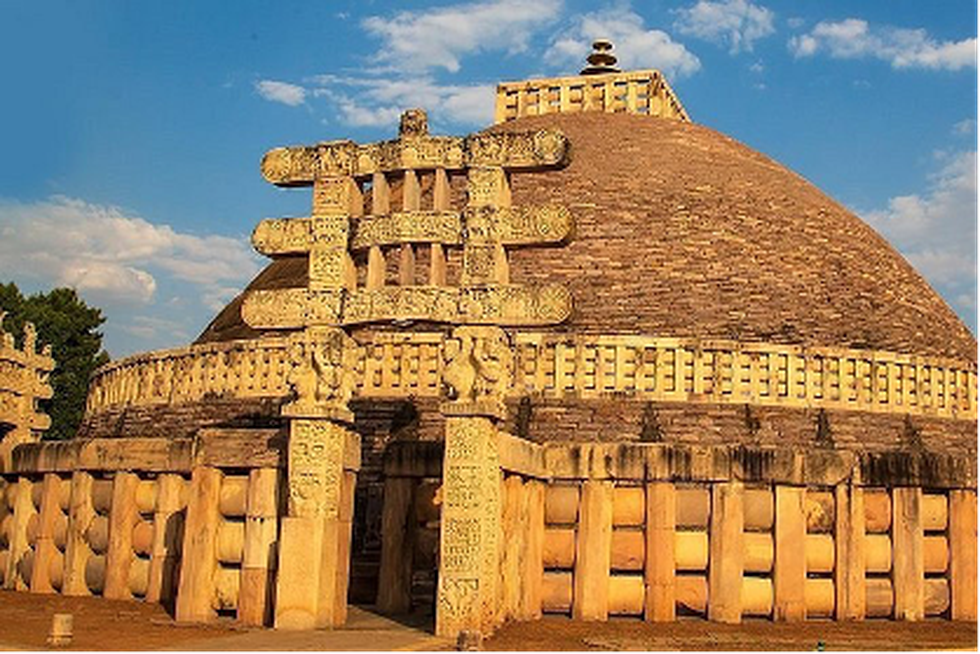
About Sanchi:
- Location:
- It is located in the Raisen district of Madhya Pradesh.
- It lies in an upland plateau region just west of the Betwa River.
- Importance:
- Sanchi is a religious place with historical and Archaeological significance.
- It has India’s best-preserved group of Buddhist monuments, collectively designated a UNESCO World Heritage site in 1989.
- Buddhist Monuments at Sanchi?
- The site of Sanchi comprises a group of Buddhist monuments (monolithic pillars, palaces, temples and monasteries), all in different states of conservation, most of which date back to the 2nd and 1st centuries B.C.
- It is the oldest Buddhist sanctuary in existence and was a major Buddhist centre in India until the 12th century A.D.
- The most prominent stupa found here is the Sanchi Stupa, also known as the Great Stupa.
- Other remains at the site include several smaller stupas, an assembly hall (chaitya), an Ashokan pillar with inscriptions, and several monasteries (4th–11th century CE).
Key Facts about Sanchi Stupa:
- It was built by the Mauryan emperor Ashoka in the third century BC.
- It enshrines religious relics or remains of the Buddha and his most revered disciples.
- Structure:
- It is enclosed by a massive stone railing pierced by four gateways, which are adorned with elaborate carvings (known as Sanchi sculpture).
- The stupa itself consists of a base bearing a hemispherical dome (anda), symbolizing the dome of heaven enclosing the earth.
- It is surmounted by a squared rail unit (harmika) representing the world mountain, from which rises a mast (yashti), symbolizing the cosmic axis.
- The mast bears umbrellas (chatras) that represent the various heavens (devaloka).
Prelims Pointers
April 27, 2023
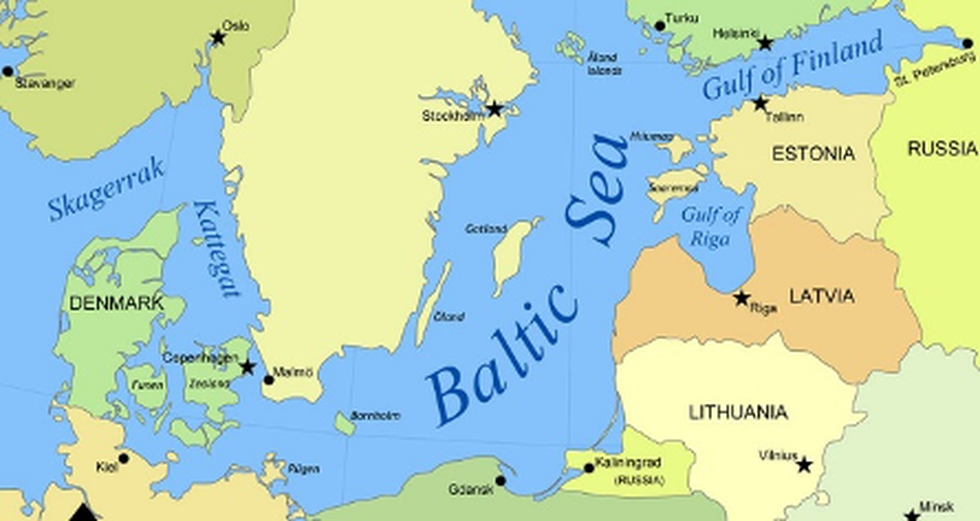
About Baltic Sea:
- It is part of the North Atlantic Ocean, situated in Northern Europe.
- It extends northward from the latitude of southern Denmark almost to the Arctic Circle and separates the Scandinavian Peninsula from the rest of continental Europe.
- The Baltic sea connects to the Atlantic Ocean through the Danish Straits.
- It is the largest expanse of brackish water in the world. Its water salinity levels are lower than that of the World Oceans due to the inflow of fresh water from the surrounding land and the sea’s shallowness.
- Surrounding Countries: Denmark, Germany, Poland, Lithuania, Latvia, Estonia, Russia, Finland and Sweden.
- Depth: Its depth averages 55 meters, and the deepest part is approximately 459 meters below the sea’s surface.
- The Baltic Sea contains three major gulfs: the Gulf of Bothnia to the north, the Gulf of Finland to the east, and the Gulf of Riga slightly to the south of that.
- More than 250 rivers and streams empty their waters into the Baltic Sea. Neva is the largest river that drains into the Baltic Sea.
- Islands: It is home to over 20 islands and archipelagos. Gotland, located off the coast of Sweden, is the largest island in the Baltic Sea.
What are the Baltic Nations?
- These are three countries of north-eastern Europe, on the eastern shore of the Baltic Sea.
- Baltic Nations are Estonia, Latvia and Lithuania.
- They are bounded on the west and north by the Baltic Sea, on the east by Russia, on the southeast by Belarus, and on the southwest by Polandand an exclave of Russia.

